Merced's Central Park: Applegate Park, Zoo & Kiddieland Merced
Applegate Park is Merced’s central park
Located along the Bear Creek Bikeway, the park is an excellent destination on bike or foot. It offers 32 acres of recreation with a zoo, outdoor theater, picnic tables, bbq grills, volleyball nets, tennis/basketball courts, a skate park, rental facilities, a large playground, a rose garden and fountain, and the Kiwanas-sponsored Kiddieland amusement park.
Plenty of parking is located around the park. Many community events are held at Applegate, including concerts and plays in the summer.
Location
Applegate Park is located along Bear Creek and the Bear Creek bikeway, between M and R Streets. The southern edge of the park follows 25th Street, P Street, and 26th Street.
Parking is available along the southern edge, N Street, and a parking lot on R Street near the Zoo.
Applegate Park Zoo
Merced Open Air Theater
Sports Facilities (Tennis, Basketball, Volleyball)
Skatepark
Playground
Fitness Equipment
Rental Facilities
Applegate Park Zoo
The zoo specializes in local wildlife and activities for children, showcasing species native to the Central Valley and the foothills. From commonly-seen birds such as egrets and hawks to the elusive mountain lion, the zoo offers a cross-section of native wildlife.
Most of the animals have been relocated from wildlife rescue agencies.
Although owned by the City of Merced, the zoo is operated by the nonprofit Merced Zoological Society.
Friendly, trained volunteers are available to answer questions. This is a great place to get a close-up view of local species before heading out to a nearby wildlife refuge.
Hours and Admission
The zoo is open from 10-5 daily in the spring and summer and from 10-4 in the fall and winter, weather permitting. The zoo is closed on Thanksgiving, Christmas, and New Year’s Day.
For the latest Zoo hours and cost for admission, click here
Location
The zoo is located on R Street between Bear Creek and 25th Street. A parking lot is located on the corner of R and 25th.
Activities
Petting Zoo and Goat Feeding: Friendly (and hungry) goats can be fed with goat food for sale at the zoo’s gift shop until the day’s supply runs out. Visitors who wish to feed the goats are advised to visit before 2PM.
The zoo also offers a small petting area where kids can play with chickens, rabbits, ducks, kittens, turtles and guinea pigs.
Field Trips: The Merced Zoological Society can arrange guided visits to the zoo for school groups.
Zoo Camp and Special Events: The zoo holds two one-week zoo camps for children aged 6 to 9 and a “Trick or Treat in the Zoo” on Halloween.
Sometimes it is the "small animals" that are fun for the little ones!
This is a safe and fun option for families with small children. A storytime for kids aged 3-5 is offered every Saturday from 11-12. A number of other special events happen throughout the year.
Birthday Parties
The zoo can be rented for birthday parties. Facilities include the Rossotti Ed-Zoo-Cation Center building with tables, chairs, refrigerator, freezer, and silverware. Table coverings, napkins, plates, cups, and invitations in an animal theme design are provided.
Zoo Parent Adoption Program
Groups can participate in the Zoo Parent Adoption Program which allows them to help feed and care for the zoo’s animals.
Gift Shop
The Zoological Society operates a gift shop that specializes in educational toys, books, and gifts. All proceeds help support the zoo’s operations.
Species
Mammals: black bear, mule deer, bobcat, raccoon, red fox, silver fox, opossum, goat, capuchin monkey
Birds: albino scrub jay, black crowned night heron, black swan, burrowing owl, cattle egret, emu, great egret, great snowy egret, green heron, great horned owl, harrier hawk,
ibis, kestrel, killdeer, magpie, northern flicker, peacock, raven, red tailed hawk, snowy egret, screech owl, Swainsons hawk, wild turkey, whistling (tundra) swan, wimberl, white faced ibis
Reptiles: tortoise, turtle
City of Merced- Applegate Zoo info (click here)
or contact the Merced Zoological Society at Mercedzoological@sbcglobal.net /
(209) 725-DEER (725-3337)
Kiddieland: Merced Kiwanis
Oporates the local Kiddieland amusement park since 1957. With six rides including a train that loops around Applegate Park, Kiddieland is a great place to take children on weekend afternoons.
Friendly Kiwanis volunteers operate the rides on Saturdays and Sundays from 1-5PM starting in March of each year.
Kiddieland 1
The amusement park remains open through October. Snacks are available at a refreshment booth. Kiddieland can be also be rented for private parties.
For more information about Kiddieland, click here
Location: Near the intersection of 25th and Q Streets.
Kiddieland 2
Additional information: Check out the Kiwanis webpage at http://greatermercedkiwanis.org/kiddieland Kiwanis is a worldwide volunteer organization whose motto is “serving the children of the world.”
Merced Open Air Theater
The most popular outdoor entertainment venue in Merced County, the Open Air Theater is the site of free concerts and plays throughout the summer. The theater can be rented for private events. Visit the City of Merced’s webpage for rental information: City of Merced Rental information.
Open Air Theater
Merced Shakespearefest stages Shakespeare plays at the Open Air Theater every summer. For more information go to: http://www.mercedshakespearefest.org/index.htm
Location: The theater is located in the middle of the park along the bikeway.
Sports Facilities
Volleyball nets are located in the eastern half of the park, between M and O Streets.
Tennis and basketball courts are located in the center of the park, near Kiddieland.
Skatepark: The skatepark is located in the center of the park, near O and 26th Streets.
Skatepark
Bikeway: Applegate Park is located along the Bear Creek Bikeway, which runs from McKee Road to Highway 59.
This route connects with other bikeways and bike lanes in Merced.
For a map, go to http://www.cityofmerced.org/documents/bikepathmap.pdf
Also check out our page titled Bike Paths in Merced County for additional bike routes throughout the county.
Playground: A large playground is located in the center of the park along 25th street between Q and P Streets. The playground includes swings, a large climbing structure with slides, and benches.
Rental Facilities: The Rossotti Ed-Zoo-Cation Center, Merced Open Air Theater, Scout Hut, Picnic Shelters, Gazebo and Rose Garden can all be rented for group events.
Visit the City of Merced’s webpage for rental costs and forms: City of Merced Rental information.
Madera County Museum
Madera County Museum
It’s a great time to visit the Madera County Museum---unless it is very hot!
Why now and not during the summer? Well, the museum has many things – including one of the best collections of history in the Central Valley – but the one thing it doesn’t have is air conditioning. In fact, it’s often closed in the summer because of the heat.
Photo By Adam Blauert
Don’t let that be a deterrent
I was blown away by the museum’s extensive collection and the successful way in which it brings to life the history of our valley. It’s a “new favorite” on my list of local places.
Although not air conditioned, it is heated, so you can visit in comfort throughout the cooler months. If you plan to visit around the holidays, call and make sure the museum will be open. The museum holds special events throughout the year and is specially decorated for Christmas.
Like the Merced County Historical Society Museum, it is located in county’s old courthouse. You can find it at 210 W. Yosemite Avenue – only about 30 miles south of Merced.
The main floor is divided up into rooms based on important themes in Madera County history. Although there are some differences between its history and Merced County’s history, there are also many similarities.
The major exhibits include Native Americans, pioneers, agriculture and ranching, logging, early photography, a reproduction of a turn-of-the-century general store, and the involvement of Madera County citizens in America’s wars.
Every possible display space has been used to showcase a truly amazing collection of artifacts – including many things I haven’t seen in any other museum.
Some of my favorites include a full-size reproduction of a logging flume, an excellent collection of Native American basketry, an altar cloth from the temple in Madera’s Chinatown, and an example of a “duster” worn by stagecoach passengers to protect clothing from dusty roads.
Photo By Adam Blauert
Several rooms on the second floor recreate a turn-of-the-century home. The original courtroom remains much as it was when the building was constructed. One of the largest rooms contains representations of Madera storefronts and window displays of the past century.
A restored stagecoach
Once used on the road from Madera County to Yosemite National Park, is one of the highlights.
By the time we’d seen the second floor, I was already more than impressed and ready to write a glowing review about it on this website.
Then we headed down to the basement. The sign at the top had led me to expect a room or two of tools and machinery.
Photo By Adam Blauert
Instead I found that the entire basement was also crammed with exhibits including a meticulously recreated blacksmith shop, a miner’s cabin and mining relics, a display about the granite quarry at Knowles, and an extensive collection of antique household and office technology.
Photo By Adam Blauert
Throughout the museum history is brought to life by a well-chosen collection of historic photos. Allow at least an hour and a half… better yet, plan for two hours or more. We stayed until closing time and could have stayed longer.
Hours
The museum is only open from 1 to 4PM on Saturdays and Sundays.
For more information you can call (559) 673-0291.
Stanislaus National Forest
Stanislaus National Forest
Merced County is adjacent to two national forests. Flowing westward through the county, the Merced River forms the dividing line between Stanislaus National Forest and Sierra National Forest. Directly in the middle of the two forests is Yosemite National Park, the ultimate source of the river.
With the Merced River as a southern boundary, Yosemite National Park and the crest of the Sierra as an eastern boundary, the Calaveras/Amador County line as a northern boundary, and a rather erratic line through the foothills and lower pines as a western boundary, Stanislaus National Forest offers 898,099 acres for a wide variety of recreational activities.
It is a land that stretches from dense forests of tall pines and firs to sharp granite peaks; a land of meadows, lakes, rivers, wildlife, and wildflowers. In the winter, heavy snow transforms it into a great place for skiing, snowboarding, snowshoeing, snowmobiling, playing in the snow, and enjoying beauty and solitude.
Because the area is so diverse and offers so many recreational opportunities, there is often no clear answer to the question “What do you do there?” This article is an effort to answer that question and to provide a list of useful resources for learning about the forest and its recreational opportunities.
One of the best resources to start with is the annual visitor guide produced by Stanislaus National Forest is
Popular recreational activities within Stanislaus National Forest include
Auto touring
Visiting historic towns
Hiking and backpacking in wilderness areas
Hiking trails outside of wilderness areas
Camping
Ranger-led activities
Fishing
Boating
Swimming
Hiking and camping with dogs
Horseback riding
Mountain biking
OHV riding and exploring 4-wheel drive roads
Hunting
Downhill skiing
Playing in the snow
Cross-country skiing and snowshoeing
Snowmobiling
Within the forest there are many privately owned areas. Some of these offer additional recreational opportunities plus tent and RV campgrounds, lodging, restaurants, stores, and gas stations.
Ranger Stations
The Stanislaus National Forest Headquarters is located at 19777 Greenley Road in Sonora.
You can get general forest information and recreation permits by contacting the headquarters. The phone number is (209) 532-3671 and the general website for the entire forest is www.fs.usda.gov/stanislaus/.
The forest is divided into four districts which can provide more specific information about their respective areas:
Groveland District: 24545 Highway 120, Groveland – (209) 962-7825
Mi-Wok District: 24695 Highway 108, Mi-Wuk Village - (209) 586-3234
Summit District: #1 Pinecrest Lake Road, Pinecrest – (209) 965-3434
Calaveras District: 5519 Highway 4, Hathaway Pines – (209) 795-1381
Road Access and Auto Touring
Stanislaus National Forest is crossed west to east by Highways 120, 108, and 4. Anumber of secondary roads ranging from two-lane paved roads to rough four-wheel drive roads crisscross the forest. The major highways are worth driving simply to enjoy the views.
Major Towns, Supplies, Lodging, Food, and Gas
The major supply and service locations are adjacent to the major roads. Most of these towns have historic roots dating back to the 1800’s and are worth a visit in their own right. Especially historic and charming are Groveland, Jamestown, Sonora, Columbia, Twain Harte, Angels Camp, and Murphys.
Each of the major routes has chambers of commerce and/or business associations with websites for information about lodging, food, supplies, gas, local activities, and special events. I’ve listed them below in order from south to north:
Highway 120 ~ Big Oak Flat, Groveland, Buck Meadows, Mather
Highways 108 and 49 ~ Jamestown, Sonora, Columbia, Twain Harte, Mi-Wuk Village, Long Barn, Pinecrest, Strawberry, Dardanelle, Kennedy Meadows
Highway 4 ~ Angels Camp, Murphys, Arnold, Bear Valley
www.ebbettspassadventures.com/
Wilderness Areas
Three wilderness areas are within or partly within the boundaries of Stanislaus National Forest. They offer some of California’s best hiking, backpacking, and fishing.
They are also great places to enjoy abundant and brilliant wildflowers and to see a variety of wildlife in its natural habitat.
Emigrant Wilderness
The most popular wilderness area within the forest, the Emigrant Wilderness is adjacent to the northwest boundary of Yosemite National Park. Much of its popularity is the result of the terrain being somewhat less challenging than the steeper southern Sierra Nevada.
A land of low granite ridges with beautiful meadows and lakes, it is much like the northwestern part of the Yosemite Wilderness.
Many remnants of volcanic activity can be seen, especially in the northeastern section. Although there are plenty of easier trails, you can also find many challenging routes that will take you far from any road.
The wilderness has a long human history and many of the lakes have been enlarged by small “check dams” that ensure a lasting water supply for grazing cattle through the summer.
Many of the meadows have been used as summer pasture since the 1800’s. Cattle are still often seen and remain a part of the living history of the area.
The lakes and streams provide some of the best fishing in the northern Sierra Nevada. There are several short backpacking and hiking destinations accessible from the western edge of the wilderness, but some of the most impressive destinations require trips of four days or more.
For more information go to: www.fs.usda.gov/recarea/stanislaus/recreation/recarea/?recid=15107
Carson-Iceberg Wilderness
Named for explorer Kit Carson who pioneered a trail through the area and for the Iceberg, a granite landmark located near the southern boundary of the wilderness, the western part is managed by Stanislaus National Forest and the eastern part by Humboldt-Toiyabe National Forest.
The Pacific Crest Trail traverses the eastern section. The terrain is rugged and steep, with fewer lakes than the Emigrant Wilderness. For these reasons this area sees fewer visitors, but provides excellent and challenging trails and options to find true solitude.
This is a great place to see remnants of the volcanic activity that shaped our state’s landscape.
For more information go to: www.fs.usda.gov/recarea/stanislaus/recreation/recarea/?recid=15109
Mokelumne Wilderness
Split among the Stanislaus, El Dorado, and Humboldt-Toiyabe National Forests, this area’s landscape is much like Carson-Iceberg.
Rugged, steep, volcanic, and without many lakes, it is still a place of great beauty where solitude may be found despite its proximity to Lake Tahoe. Located north of the Carson-Iceberg Wilderness, a long section of the 2,600 mile Pacific Crest Trail also passes through this area.
For more information go to: www.fs.usda.gov/recarea/ltbmu/recarea/?recid=11788.
Trails Outside of Wilderness Areas
A number of excellent trails are found outside of the wilderness areas. Details can be found in some of the books listed below. You can also read some short descriptions at this site: www.fs.usda.gov/activity/stanislaus/recreation/hiking/?recid=14833&actid=50.
Books, Maps, and Other Resources
Although web-based resources are great for planning a trip, cellular service, internet, and electric power are hard to come by in much of the forest.
If you can store electronic resources on your device and have well-charged batteries, you may be able to continue to access your information this way. It’s always good, however, to have some paper resources. Print out information from the internet and bring both maps and books.
The general guide produced by Stanislaus National Forest is invaluable to have with you, especially if your plans change while on a trip. Weather and other elements outside of your control often require flexibility.
Books
Unfortunately there is no single book that comprehensively covers this area. For backpacking, Sierra North from Wilderness Press is a great choice.
For shorter day hikes, pick up a copy of California Hiking by Stienstra and Brown. Not only does this book highlight the best day hikes in Stanislaus National Forest, it is also an excellent resource for the entire state with a total of 1,000 hike routes.
Emigrant Wilderness published by Tom Harrison Maps Carson-Iceberg, Emigrant, and Mokelumne Wilderness Areas published by National Geographic The Forest Service also publishes separate maps for each wilderness area For more detailed hiking maps, check the USGS website for 7.5 and 15 minute sections. You can order printed copies of these maps or download free electronic copies.
Maps
It’s good to have a general highway map, but if you plan to explore off the main roads the Stanislaus National Forest Map is one of the most important things to have with you. In addition to roads and trails, it also shows campgrounds, ranger stations, supply locations, and recreation areas. It supplements the general guide to the forest (see above).
For some reason it is hard to find on the internet. Your best source is the website of the U.S. Geological Survey where you can buy it for $12: store.usgs.gov.
You can also purchase it at a ranger station.
For hiking or backpacking, the following maps are the top choices:No matter what resources you use, always call a ranger station to verify current conditions before you leave on a trip.
Conditions are always changing and even the official websites can be badly out of date.
Campground Camping
Within Stanislaus National Forest you’ll find 47 campgrounds.
You can also find a complete listing at: www.fs.usda.gov/activity/stanislaus/recreation/camping-cabins/?recid=14833&actid=29.
Some campgrounds are reservable in advance. You can search for reservable campsites by going to: www.recreation.gov.
Dispersed Camping
Camping outside a campground (usually referred to as “dispersed camping”) is permitted in areas of the forest where signs do not specifically prohibit it.
You can always check with a ranger station before you set up camp. In order to have a campfire you need a California Campfire Permit, available at any ranger station. You can also take an online quiz and get one issued electronically by going to: www.fs.fed.us/r5/sequoia/passespermits/campfire_permit/campfire-index.html.
As long as you follow the rules on the permit and make sure that you have chosen a safe site, your campfire is legal. Before your trip you should also make sure that additional campfire restrictions have not been put in place.
In dry years campfires are sometimes prohibited outside of established campgrounds.
Ranger-Led Activities
A variety of programs and hikes for all ages and ability levels are offered throughout the year. You can find up-to-schedules for each ranger district at: http://www.3forests.us/stanislaus.
Fishing: The forest abounds with streams, rivers, natural lakes, and reservoirs. Many are stocked and most are open to fishing. For regulations and stocking information, go to www.dfg.ca.gov.
Tom Stienstra’s California Fishing is a good general guide to the whole state, including Stanislaus National Forest.
Boating: Motorized fishing boats area allowed on the following lakes: Alpine, Beardsley, Cherry, Pinecrest, Spicer (in the half of the lake within Tuolumne County, but not in the Alpine County half), and Union. Water skiing and jet skis are allowed at Beardsley and Cherry.
Swimming: Swimming is allowed in most streams, rivers, and lakes, however it can be dangerous. Make sure that all people in your group have strong swimming abilities and you have flotation devices in case a rescue is necessary. Check with a ranger for current conditions. Generally Pinecrest Lake is one of the safest easily-accessible swimming destinations. Cherry Lake is also a good choice.
Dogs
Dogs are welcome on trails and in campgrounds in national forests as long as they are on-leash and well-behaved. They are not permitted on trails in state or national parks. Dogs may be off-leash as long as they are under voice control within wilderness areas (except in the Carson Pass Management Area of the Mokelumne Wilderness).
Horses
Horses are permitted on trails within the national forest. For overnight trips they must be included on your wilderness permit. Check with the ranger station for the best trail parking for horse trailers. Day rides and overnight pack trips are offered by:
Kennedy Meadows Pack Station: www.kennedymeadows.com/
Aspen Meadow Pack Station: aspenmeadowpackstation.com/
Leavitt Meadows Pack Station: www.leavittmeadows.com/
If you are not up to carrying all your gear or if you want to enjoy the wilderness with in a less strenuous way, a pack trip is a good choice.
Mountain Bikes
All roads and most trails outside of wilderness areas are open to mountain bikes. Check with a ranger for recommended trails and roads. Ann Marie Brown’s Northern California Biking is an excellent resource.
Off-Highway Vehicles and 4-Wheel Drive Vehicles
Many remote forest roads require 4-wheel drive and several areas are open to off-highway vehicles. For more information go to: www.fs.usda.gov/activity/stanislaus/recreation/ohv.
A copy of the Stanislaus National Forest map is extremely helpful in locating the best sites.
Hunting
The forest, including wilderness areas, is open to hunting according to DFG regulations. You can check regulations at www.dfg.ca.gov. Target shooting is prohibited in wilderness areas.
Winter Activities
Some roads and campgrounds are open through the winter months, especially in the lower elevations. Always carry tire chains and know how to install them. Highway 4 closes at the Bear Valley road junction and Highway 108 closes beyond Strawberry after the first major snowfall. Many lodging facilities are open year-round.
Downhill skiing and snowboarding
Offered at Dodge Ridge (Highway 108 at Pinecrest), and Bear Valley (Highway 4 near Lake Alpine). For more information:Snow Play Areas: Stanislaus National Forest is also a popular destination to play in the snow. Three “Sno-Parks” offer snow recreation for a $5 use fee.
You can find more information at: www.ohv.parks.ca.gov/pages/1233/files/sno-parks_2008-09.pdf.
Permits must be purchased before you reach the Sno-Park. Look for signs as you drive up Highway 108 or Highway 4 or call the ranger station for a current listing.
Snowshoeing and cross-country skiing
Along trails is also popular. Occasionally ranger-led snow activities are offered. Check with the ranger station for details. If none are offered, try Yosemite or Sequoia National Parks.
To find your own route, pick up a copy of Best Snowshoe Trails of California by Mark White. www.dodgeridge.com/sitewww.bearvalley.com
Snowmobile Trails
For snowmobiling information go to www.fs.usda.gov/activity/stanislaus/recreation/wintersports/?recid=14833&actid=92 or call the ranger station.
Milliken Museum and Los Banos Historic Sites
Photo by adam Blauert
Treasure trove of artifacts
With people, it’s what’s on the inside that counts. The same is true for museums. Los Banos’ Milliken Museum may look like a 1960’s era elementary school building on the outside, but inside you’ll find a treasure trove of artifacts and history.
Want to see evidence of some of the species that lived here in prehistoric times or artifacts from the Native Americans who first settled our valley?
Want to know more about Henry Miller who led the development of the Westside’s agriculture and the town of Los Banos? Interested in seeing photos of destruction in Los Banos caused by the 1906 San Francisco Earthquake? Do you enjoy learning about the technology of home, business, farm, and community life in the past century?
If you answered “yes” to any of the above, then you’ll probably enjoy a visit to the museum.
Having not visited in several years, I stopped in a couple of months ago. The museum has recently reopened following a transfer of the building’s ownership and some necessary repairs that kept it closed through the winter.
Ralph Leroy Milliken
Local farmer, mail carrier, and historian Ralph Leroy Milliken started the museum’s collection in 1954 with documents, artifacts, and oral histories. He served as the museum’s curator until his death in 1970.
In recognition of his pioneering effort, the museum has renamed for him.
Today, enthusiastic volunteers staff the museum and carry on the tradition that he began.
For those who want to learn more about local history, the museum sells several books written by Milliken and other local historians.
Statue of Henry Miller
Allow at least an hour to appreciate the museum’s collection. While you’re in Los Banos, don’t miss the statue of Henry Miller located at 6th and H Streets.
You can then walk or drive around the area between H Street and Highway 152.
This is Los Banos’ historic downtown and there are many interesting old buildings to see. If you’re hungry there are plenty of places to get a bite to eat including the legendary Wool Growers Basque Restaurant, a Westside institution for 120 years.
The name comes from the work of sheepherding done by many of the early Basque settlers of the county. Hearty multi-course meals are served family-style in a dining room that has hardly changed in 50 years.
It’s the perfect place to end a “history trip.” Just don’t forget to bring cash as it is the only form of payment accepted at Wool Growers. If you’re looking for something else to complete your trip, stop by the nearby San Luis National Wildlife Refuge to see tule elk and waterfowl.
Near the refuge entrance you’ll see the Camp San Luis Adobe, the oldest intact building in Merced County.
Location and for more information
Built in 1848 by Francisco Perez Pacheco, the one-room house is now protected by a metal superstructure. The refuge is located north of Los Banos on Wolfsen Road.
The Milliken Museum is located adjacent to Los Banos County Park along Highway 152 (Pacheco Boulevard) between 7th and 9th Streets in Los Banos.
The park is also often known as “Pacheco County Park.” You can park in the parking area on Pacheco Boulevard or behind the museum on Washington Avenue.
For more information, call the museum at (209) 826-5505 or go to http://www.ourlosbanos.com/millikenmuseum.html.
The museum is open 1-4PM Tuesday through Sunday.
Visit Hagaman Park-Merced County
Photo by adam blauert
Hagaman Park
Located on a bluff above the Merced River in northwestern Merced County, Hagaman Park is especially popular with residents of the west side of the county. A large picnic area is available for rent.
Because of drownings, this area is not open to fishing and a fence runs along the bluff to discourage river access.
If you want to swim or fish in the Merced River, try George J. Hatfield State Recreation Area, or McConnell State Recreation Area.
Location
19914 River Road, Stevinson, CA (Intersection of River Road and Highway 165)
Distance from Merced: 24 miles
Distance from Los Banos: 23 miles
Facilities and activities
Flush restrooms
Drinking fountains
Picnic areas with tables, shelters, and BBQ grills
Group picnic areas and shelters
Playground
Website
Nearby Parks
Camping and picnic areas are available at
Turlock Museums
Photo by adam blauert
Museums in the Valley
Although part of Stanislaus County, Turlock is only 25 miles north of Merced – closer than some other towns that are within the county. Just like Merced, the core of Turlock was laid out by the Southern Pacific Railroad as it built southwards through the Central Valley in the early 1870’s.
The town had a slow start, finally taking off after the Turlock Irrigation District built canals to provide Tuolumne River water for irrigation. Large tracts of land were bought up by land companies and subdivided as “colonies” – the “colonists” could buy the land on credit and pay off part of the loan after each year’s harvest.
History of the Central Valley
I grew interested in the town’s history after reading the following in Garden of the Sun, a history of the Central Valley written by Fresno State Professor Wallace Smith in 1939:
A pioneer wheat grower in that region asserted that the sand drifted against the stables in such high piles that pathways had to be shoveled before stock could be taken out.
The board fences used in the early days often broke from the weight of the sand piled against them by the winds surging through the passes in the Coast Range mountains.
Grasshoppers
Then came the grasshoppers. They were hatched in April, they appeared in full bib-and-tucker in May, they defoliated the vineyards and orchards in June, and only the bare peach pits, glistening like gnawed bones, were left on the trees in July.
In 1904 an indignation meeting was held at Hilmar to protest against the alleged misrepresentations of the advertisements and circulars which had been sent out to prospective colonists.... But eventually the grasshoppers were destroyed by grass fires, night fires, and hopperdozers; water demonstrated the wonderful fertility of the apparently sandy soil; and homes were erected. (2nd edition, pp. 596-597)
My great-grandfather settled in Turlock just 10 years after the time described in Smith’s history, so I grew curious about learning more.
What drew him to Turlock? What were conditions like in 1914?
The next time I drove up to Turlock I made a stop at the Turlock Historical Society’s museum.
Historic Storefront
Located in a historic storefront at 108 S. Center Street, it is open Tuesdays and Thursdays from 11AM to 3PM. Admission is free and friendly volunteers are on hand to answer questions.
For more information go to: http://turlockhistoricalsociety.org/
or call (209) 668-7386.
The museum has an interesting collection of artifacts and antiques that illustrate the town’s development, life in the previous century, and the many peoples and cultures that came from around the world to settle in this area.
In addition to what I learned from the displays, I am continuing to learn more as I read a local history that I bought while at the museum: Streams in a Thirsty Land – A History of the Turlock Region.
Carnegie Arts Center in Turlock
If you make the trip up to Turlock, make sure you also plan to visit the Carnegie Arts Center at 250 North Broadway.
Originally established as one of Andrew Carnegie’s philanthropic enterprises to spread education, the library was built in 1916.
Nearly 150 Carnegie libraries were built in California during the early 1900’s. In 1968 the books were moved to a larger building and the former library was converted into a recreation and arts center.
While being renovated and expanded in 2005 it was gutted by fire.
Overwhelming community support made possible the restoration of the building and the addition of an 18,000 square foot exhibit, classroom and office space. Regular art classes are offered for all ages, though the biggest attractions for visitors from outside the county are the frequently-changing world-class art exhibits.
Admission is $5/person and the Arts Center is open Wednesday-Sunday from 10AM to 5PM.
For more information about the Carnegie Arts Center go to http://www.carnegieartsturlock.org
or call (209) 632-5761.
Calaveras Big Trees
Photo by adam blauert
The wonder of the Big Trees
A shady grove of giant sequoias is a great place to be during the hot months of summer. Naturally-occurring populations of giant sequoias – scientific name Sequoiadendron giganteum, also known as Sierra redwoods – are found only along the western slope of our Sierra Nevada mountains.
These massive trees can grow to be over 300 feet tall and 100 feet in circumference, and can live for as many as 3,500 years.
Out of about 70 total groves of these amazing trees, only 9 are located north of the Kings River. Close to home, Yosemite’s spectacular Mariposa Grove is probably the best-known, with 500 mature sequoias.
During the summer it can be enjoyed on foot or by taking one of the tram tours offered by the park. Two smaller groves within the park, the Merced and the Tuolumne, are accessed from easy trails along the Tioga Road (Highway 120).
Highway 4
Another great place to see sequoias is Calaveras Big Trees State Park, located four miles east of Arnold on Highway 4. Distance-wise, the drive from Merced is only about 10 miles longer than the drive to Yosemite’s Mariposa Grove.
While Yosemite’s Mariposa Grove is a must-see while you’re in Yosemite, one of the disadvantages is that you can’t actually camp there. At Calaveras Big Trees, you’ll find 74 comfortable sites with flush toilets and coin-operated showers right next to the North Grove.
Camping in the Big Trees
The campground is so close to the grove that you can start your hike through the trees directly from your campsite. An additional 55 sites are located at Oak Hollow, halfway between the two groves.
A small number of more primitive “environmental campsites” are also available throughout the park.
The campsites at Big Trees are often much easier to book than sites within Yosemite.
The North Grove is one of two groves that make up the park. Located on the north side of North Fork of the Stanislaus River, it is the most popular of the two.
Much of this is due to the fact that the trail is accessible to just about everyone – wheelchairs and strollers are commonly seen – and you can see a lot in an easy 1.5 mile loop.
Big Stump
One of the most memorable landmarks along the trail is the “big stump,” of the “Discovery Tree.” Cut down in the 1850’s, the stump was sanded smooth and used as a dance floor.
Today’s guests can stand on it to get an idea of just how massive these trees can be.
Tunnel cut through a Big Tree
Further along the trail, the “Pioneer Cabin Tree” has a tunnel cut through it and is one of the most photographed trees in the park.
The trees of this grove were the first giant sequoias discovered by European-American settlers that the general public came to know about.
They immediately became a popular tourist destination.
The South Grove is located on the opposite side of the Stanislaus, a few miles down the Walter W. Smith Memorial Parkway.
Hiking
For a longer hike, this grove’s 5-mile loop trail will satisfy. Along the way you’ll see the Agassiz Tree, the park’s largest. 262 feet tall and almost 100 feet in circumference, it is an amazing sight.
A number of longer trails and unpaved fire roads connect major parts of the park, allowing longer hikes.
For a different landscape, try the 2.5 mile Lava Bluffs Trail above the river.
In addition to hiking and camping, the park provides picnic areas and the river is open to fishing and swimming.
Day use is $8 a car
As a day trip or overnight camping destination, it is a great place to escape the summer heat.
It’s also a great place to visit year-round. The campground is open from March through November and the trails stay open in the snowy months for snowshoeing and cross-country skiing.
The park provides a safe place for kids to play in the snow. During a winter visit you can warm-up in the warming hut located at the North Grove.
In the fall maples, dogwoods, and shrubs can provide dramatic fall color among the evergreen sequoias, pines, and firs.
More information
The park’s website provides a lot of useful information for planning a trip.
Go to http://www.parks.ca.gov/?page_id=551
for more information or call the park at (209) 795-2334.
To book a campsite reservation, go to http://www.reserveamerica.com/
or call 1-800-444-7275.
Campsites are $35 a night and can accommodate recreational vehicles.
San Juan Bautista
PHOTO BY ADAM BLAUERT
Central Valley and the Merced river
In 1806 a Spanish expedition into the Central Valley identified the Merced River as the most likely site for the first inland mission settlement. The recommendation was never acted upon because of the hostility of the valley’s Native American tribes.
Although the original inhabitants of California had often been friendly to the Spanish during their first contacts, many tribes became more wary as disease spread, land was lost, and those who came to live at the missions were not allowed to leave.
Many natives who fled the mission life ended up joining valley and foothill tribes beyond the active control of the Spanish.Although a number of land grants were made in the Valley after Mexico rebelled from Spain in 1821, there was never very much Spanish or Mexican settlement.
In Merced County, the San Luis Gonzaga, Santa Rita, Orestimba, and Panoche grants were the only permanent settlement sites in the 1840’s.
San Juan Bautista, in San Benito County
The closest town and closest mission of any size were located at San Juan Bautista, in modern San Benito County.
50 miles west of the current town of Los Banos, the mission was close enough to the valley that padres traveled along Los Banos Creek to recruit and/or capture natives to come to the mission.
“Path of the Padres” hike
The annual “Path of the Padres” hike offered by California State Parks at Los Banos Creek Reservoir gives hikers a chance to retrace part of this route and to learn more about California’s early history. This hike is offered from February through April each year.
Call (209) 826-1197 at the beginning of the year to make reservations. Or website:
http://www.parks.ca.gov/Events/EventDetail.aspx?id=5098
Today, San Juan Bautista is one of the best-preserved remnants of Spanish and Mexican California. It is a town that time has nearly forgotten, with a current population of less than 2,000.
Historic buildings dating from 1797 to the mid 1800’s surround three sides of the town’s plaza. The third side is open to the fertile San Juan Valley, with productive farmland stretching to the edge of the mountains.
San Juan Bautista’s plaza
The only town center in California where all of the buildings date back to the mid-1800’s or before.
The Plaza Hotel, Castro-Breen Adobe, Plaza Hall and Plaza Stable have been restored to the way they would have been then and are open to the public as part of San Juan Bautista State Historic Park.
Hours
Closed on Mondays and holidays, they are open from 10AM to 4:30PM Tuesday-Sunday. There are few other places in California where it is so easy to imagine the 1840’s, when California was still a province of newly-independent Mexico.
It’s a great place to learn about California’s history.
For more information go to: http://www.parks.ca.gov/?page_id=563.
Active Church
The mission is still an active church but is open to the public from 9:30AM to 4:30PM seven days a week. Visitors can see exhibits about mission life and wander through the church and the garden.
The church is one of the biggest and most impressive among California’s 21 missions. The thick adobe walls keep it surprisingly cool in the summer. A statue in front of the church commemorates St. John the Baptist, the church’s patron saint.
For more information go to: http://www.oldmissionsjb.org/index.html.
Special events
One block from the plaza is 3rd Street, the town’s main street. Lined by a collection of historic structures, including adobes dating back to the 1800’s, the street has many great restaurants and interesting shops.
The historic core of the town is pedestrian friendly and quiet. You may see chickens wandering the streets or cats sleeping beneath the pews in the mission church.
The cats are permanent residents of the mission and help to keep rodents from taking over.
Despite its size, San Juan Bautista has a busy calendar of annual community events, celebrations, and festivals.
These include annual arts and crafts festivals, car shows, art studio tours, food, music, and history events.
For a regularly updated schedule of events, go to http://www.sanjuanbautistaca.com/.
Students and children
The state park offers a “living history day” on the first Saturday of each month with costumed docents and events for children. 50 miles west of Los Banos on Highway 156, San Juan Bautista is a great place for a day trip or an easy stop on the way to Monterey Bay.
If you have a student in 4th grade who is studying California history, a trip to San Juan Bautista can bring it to life.
Nearby Fremont Peak State Park offers a campground, an observatory, and a relatively easy but exciting ½ mile hike to a summit with 360 degree views of the coast, Monterey Bay, and the surrounding mountains, hills, and valleys.
Gold Rush Towns of the Central Foothills
PHOTO BY ADAM BLAUERT
Gold Rush Towns of the Central Foothills
Gold, silver, and other minerals have been mined throughout California. Best known of all the mining areas is the “Mother Lode.” Stretching from El Dorado County south to Mariposa County, the lode is a continuous 120 mile long zone of hard rock gold deposits.
Today Highway 49 winds through many of the towns that sprung up during the Gold Rush of the 1850’s.
Foothill camps
The foothills between Merced County and Yosemite were a part of the Mother Lode known as the “Southern Mines.” The line separating them from the “Northern Mines” was drawn along the Mokelumne River, a few miles south of the town of Jackson.
Most mining camps were nothing more than temporary encampments established where a section of a river was panned or sluiced until the gold ran out.
Permanent towns developed in areas where more extensive operations spent decades tunneling deep into the hills.
Although most of these towns faded after the mines closed, tourism has brought some of them back to life. Visitors can explore buildings and artifacts from the 1800’s among shops, restaurants, and lodging facilities.
Below is a guide to some of the most interesting historic towns along the western edge ofYosemite from north to south.
All of these towns are interesting, but Columbia, Sonora, Groveland, and Mariposa are my top recommendations for Gold Rush towns that have the largest and most interesting historic areas.
Jamestown’s Rail town is also a must-see destination in the “Southern Mines.” Coulterville and La Grange small, but still very interesting.
Largely bypassed by tourism, Hornitos has a mix of interesting ruins mingled with historic homes that are still inhabited.
Any historic town can be a great place to stop and as part of a trip into the Sierra Nevada and many offer lodging, including modern motels, historic hotels, and quaint bed and breakfast accommodations.
Be sure and check each town’s webpage lengths for special events – most of these towns offer a wide variety of celebrations and history-themed festivals throughout the year, especially during Independence Day and Christmas.
No matter where you visit, please be sure to respect private property and “No Trespassing” signs.
Columbia State Historic Park
Columbia was known as the “Gem of the Southern Mines” during the Gold Rush and it still sparkles.
Recognizing how well it had survived the years, the state of California began acquiring and renovating the buildings in 1945.
Today the streets are closed to vehicles and Columbia is just about as close as you can get to stepping back in time.
The state park includes over 50 historic buildings, many of which house exhibits, restaurants, and shops that sell reproductions of products of the 1800’s.
Admission is free and the park hosts many special events throughout the year.
Many of these events have activities planned for children of all ages. The park is always open, but most businesses are only open from 10AM to 5PM. Lodging is available within historic hotels in the park.
For more information go to http://www.parks.ca.gov/default.asp?page_id=552,
http://www.parks.ca.gov/pages/552/files/ColumbiaSHPWeb2010.pdf
or http://www.columbiacalifornia.com/.
Stagecoach and horseback rides can be enjoyed on weekends
The historic Fallon House Theatre offers live stage entertainment throughout the year http://www.sierrarep.com/.
Sonora
Not to be outdone by the “Gem of the Southern Mines,” Sonora was known as the “Queen of the Southern Mines.” Originally founded by miners from Sonora, Mexico, it is still a thriving town that maintains a lot of historic character in its extensive downtown area – the kind of place where you can spend a lot of time wandering around and enjoying the interesting architecture and shops.
The downtown area has been bypassed by Highway 108. Watch for exit signs if you enter the town by that route.
Residential areas around downtown contain picturesque Victorian homes.
The Tuolumne County Museum and History Center is housed in the old jail and presents excellent exhibits of the life in the pioneer days of Tuolumne County http://tchistory.org/index.html.
The Sonora Chamber of Commerce operates a daily trolley that connects Sonora with Columbia and Jamestown (May-Labor Day), allowing visitors to stay in one town and enjoy all three without having to drive.
More information is available at http://www.tuolumnecountytransit.com/HistoricTrolley.html
For information about lodging, restaurants, and activities, go to http://www.sonorachamber.com/
Jamestown
Rail town 1897 State Historic Park is Jamestown’s greatest attraction – this park preserves the roundhouse and engines of a short line railroad of the 1800’s. 40-minute rides on historic railcars are offered on weekends and Monday holidays throughout the summer.
The historic business district has many interesting buildings, although many date from a more recent time than the 1800’s. For information about lodging, food, and events,
go to http://www.tcvb.com/
Chinese Camp
Far less touristy than all of the other historic towns listed on this page (except Hornitos and Bear Valley), Chinese Camp has largely been bypassed by the modern world.
Founded by Chinese miners who were banished from other mining camps, a few structures still remain from the 1800’s, including St. Xavier’s Catholic Church.
Big Oak Flat
Smaller than neighboring Groveland, Big Oak Flat has a couple of historic buildings and a monument commemorating the now-vanished oak that gave the town its name. If you are on your way to Groveland or Yosemite, you might make a quick stop here.
Groveland
The main highway is also Groveland’s main street, lined with historic buildings.
The historic business district is smaller than that of Sonora, Mariposa, or Columbia, but still quite picturesque and worth a visit. The town’s original name was Garrotte because of its reputation for swift justice in the form of hanging.
The remains of a hanging tree can still be seen in the town. Groveland’s Iron Door Saloon claims to be the oldest bar in California and offers beverages, food, and live entertainment. Despite the name, families are welcome.
For more information about the town go to http://www.yosemitegold.com/yosemite/groveland.html.
La Grange
A sleepy town on Highway 132, several interesting historic buildings and a small museum evoke the wilder days of the 1850’s when La Grange was the county seat of Stanislaus County.
A tiny jail stands next to the museum and visitors can peer through the bars into the single cell. An iron bridge from the early 1900’s is open to pedestrians for a quiet stroll over the Tuolumne River.
Coulterville
The Northern Mariposa County History Center and the historic Hotel Jeffrey stand at the junction of Highways 49 and 132. Coulterville is one of the smaller Gold Rush era towns, but is picturesque and well-worth a visit.
“Whistling Billy,” a tiny antique locomotive that once hauled ore from the Mary Harrison Mine, stands in front of the History Center.
Bear Valley
Once the headquarters of John C. Fremont’s mining empire, a few buildings from the 1800’s still remain in this sleepy hamlet. Bear Valley is an interesting place to stop between Mariposa and Coulterville.
Hornitos
On a quiet day Hornitos may look like a true ghost town, though it still boasts a number of inhabitants.
The Hornitos Patrons Club hosts special events throughout the year and a famous candlelight procession to the cemetery on All Souls Day (November 2) draws hundreds of visitors.
More information is available at http://www.hornitospc.com/.
The brick shell of the Ghirardelli Building is the remnant of a store owned by the man whose San Francisco chocolate company became known the world over.
Hite’s Cove
A true ghost town, this former settlement is reached by a 4.5 mile trail (9 miles round-trip). Located along the South Fork of the Merced River, John Hite operated a profitable mine along this bend in the river starting in the early 1860’s. At the height of operations, several dozen people lived there.
The mine shut down in the late 1800’s and a forest fire burned the structures in 1924, but rock walls and heavy iron machinery remain.
A few modern mining claims exist in this are and there is privately-owned land along the first ½ mile of the trial, so be sure to observe posted signs.
This is a great hike in the springtime when wildflowers cover the slopes of the canyon near the start of the trail.
The trail starts at the site of Savage’s Trading Post on Highway 140 between Midpines and El Portal.
Mariposa
The largest town between Merced and Yosemite on Highway 140, Mariposa’s main street has many historic buildings and interesting stores.
Once part of John C. Fremont’s empire, many of the streets are named for members of his family.
Windows on the World Books has the best selections of books about local history and recreation that can be found. The historic courthouse, built in 1854 is the oldest still in use in California.
Church in Mariposa built in 1864.
For more information on Mariposa, go to http://visitmariposa.net/
The Mariposa Museum and History Center
For information see website -(http://mariposamuseum.com/) The museum has a working stamp mill and offers some of the best displays of Gold Rush history anywhere in the Southern Mines and the California State Mining and Mineral Museum portrays the history of mining in California with extensive collections of minerals and gems
(http://www.parks.ca.gov/?page_id=588).
Catheys Valley
Although placer gold was mined here in the early days of the Gold Rush, Catheys Valley developed to supply ranches and farms in the lower foothills.
Although not a major town in any way, an old schoolhouse and blacksmith shop have been restored and moved to the county park on the eastern edge of town.
Visitors can peer through the windows of the school and see what a typical rural school of the late 1800’s and early 1900’s looked like.
It’s a pleasant place to stop for a picnic on a spring or fall day while on the way to Yosemite.
Oakhurst
South of the Mother Lode and originally named Fresno Flats, Oakhurst developed to serve farms, ranches, and the logging industry that developed after the Gold Rush.
A number of interesting historic buildings from the 1800’s have been relocated to the Fresno Flats Historic Village and Park on Road 427.
The park is open from dawn to dusk and the buildings may be toured from 10AM to 2PM daily.
For more information call (559) 683-6570 or go to www.fresnoflatsmuseum.org.
The Oakhurst Chamber of Commerce offers information about accommodations and events: http://www.oakhurstchamber.com
Sonora, Mariposa Groveland, Oakhurst, and Columbia have the best selection of food, lodging, gas, and groceries. Jamestown and Coulterville offer all services with less variety. Big Oak Flat and La Grange have gas, limited supplies, and meals.
Catheys Valley and Chinese Camp offer gas and limited supplies.
A small store and a historic bar in Hornitos operate with limited hours. Bed and breakfast accommodations are offered in or around all of the towns.
For listings, try the following websites
Columbia Chamber of Commerce: http://www.columbiacalifornia.com/
Mariposa CountyTourism Bureau: http://www.homeofyosemite.com/
Another helpful Mariposa County site: http://visitmariposa.net/
Oakhurst Chamber of Commerce: http://www.oakhurstchamber.com/
Sonora Chamber of Commerce: http://www.sonorachamber.com/
Tuolumne County Chamber of Commerce: http://www.tcchamber.com/
Tuolumne CountyVisitors Bureau: http://www.tcvb.com/
Mariposa County Museums
Photo by adam blauert
Mariposa County Museums
Mariposa County’s history and natural resources provide a wealth of interesting stories, knowledge, and sights.
Three excellent museums display some of these treasures to the public. Located adjacent to Merced County’s eastern boundary, Mariposa County is an easy day or weekend trip.
Museums can be enjoyed any time of year. They’re a great way to escape the heat of summer or the cold and wet of winter.
Even on a pleasant spring or fall day, there’s nothing wrong with spending a few hours indoors. If the weather is really bad, however, call in advance to make sure the museum will be open.
On a very wintry day last year I found the Mariposa Museum and History Center closed. Many stores in town were also closed and I was informed that this was due to the expectation of worse weather yet to come.
Mariposa Museum and History Center
5119 Jessie Street, Mariposa
Hours of Operation and Admission
10AM – 4PM daily except Thanksgiving, Christmas Eve, Christmas Day, New Year’s Eve, New Year’s Day, $4 adults, children under 18 free. Active duty military personnel and first responders in uniform or with active duty ID are also free.
Exhibits and Collections
The Mariposa Museum and History Center tells the story of Mariposa County from the Miwok Indians who first inhabited the area to the miners of the California Gold Rush and the ranchers who supplied the mining towns.
You can also learn about the early Chinese inhabitants of the county, John C. Fremont, Joaquin Murietta, the Yosemite Valley Railroad, and logging. The museum contains reproductions of early stores and homes and displays of mining technology and methods.
Various rotating exhibits provide something new for repeat visitors. Outside the walls of the museum is a large collection of mining and ranching equipment including an operational 5-stamp mill and a monitor used in hydraulic mining.
In addition, the grounds include historic Mariposa County buildings dating back to the 1850’s: the Counts House, the office and print shop of the Mariposa Gazette newspaper, a broom making shop, and a reconstruction of a typical blacksmith shop.
Other Facilities and Services
A picnic area is provided. The gift shop has an excellent selection of works on local history.
The museum’s website has a map for those interested in doing a historical walking tour of the town.
Research Opportunities
The museum contains a large collection of county records and historic photos, especially useful for family historians.
Appointments must be made in advance and a fee of $25/hour is charged.
Free access to the research library is one of the benefits provided to members of the museum.
Copies of documents and photos can be made for a small fee.
Tours
Group tours and school field trips can be arranged by contacting the museum.
The 5-stamp mill is often operated for groups.
Photo by Adam Blauert
Blacksmithing demonstrations and gold panning can be arranged.
Special Events and for more information
Go to www.mariposamuseum.com
or call (209) 966-2924.
Saint Joseph Church in Mariposa founded in 1857
California State Mining and Mineral Museum
Photo by adam Blauert
Location: 5005 Fairgrounds Road, Mariposa
Hours of Operation: From October 1 through April 30, the museum is open 10AM – 4PM Thursday through Sunday.
From May 1 through September 30, the hours change to 10AM – 5PM.
Admission: $4 adults, children 12 and under are free.
Exhibits and Collections
The Mining and Mineral Museum displays both the mineral variety of California and the state’s mining history.
The museum’s collection includes thousands of specimens.
Collections are rotated and about 350 specimens are on display at any given time.
The 13.8 pound Fricot Nugget – the largest remaining intact mass of crystalline gold from the California Gold Rush –is one of the most popular attractions.
Visitors are often surprised to see the museum’s California diamonds. On the back side of the museum building is a life-size reproduction of a mining tunnel, open for exploration.
A “touch table provides children with an opportunity to handle mineral specimens.
Other Facilities and Services
Gift shop
Tours: School and group tours can be arranged.
Special Events
The museum presents a gem and mineral show in April with special exhibits and activities for children.
Activities for children are also offered on Labor Day Weekend when the Mariposa County Fair is held at the adjacent fairgrounds.
For More Information
Go to http://parks.ca.gov/?page_id=588
or call (209) 742-7625.
Northern Mariposa County History Center
PHOTO BY ADAM BLAUERT
Location: Intersection of Highways 132 and 49, Coulterville
Hours of Operation: 10AM – 4PM, Wednesday-Sunday, except major holidays.
Exhibits and Collections
Divided from the town of Mariposa by the deep Merced River Canyon, Coulterville has long been the population center of northern Mariposa County.
Today, Coulterville has its own museum that focuses on the unique history of this part of the county.
The museum’s displays are housed in two historic buildings that date back to 1856 and 1863.
PHOTO BY ADAM BLAUERT
Locally known as the “Coulterville Museum,” the Northern Mariposa County History Center displays and interprets a broad range of artifacts and stories.
Permanent exhibits chronicle the history of Coulterville and local mining and ranching operations.
Rotating exhibits provide new surprises for repeat visitors.
PHOTO BY ADAM BLAUERT
One of the most popular attractions is “Whistling Billy,” a small locomotive engine that hauled ore from the Mary Harrison Mine.
The engine is open to the public and visitors can climb inside the cab for photographs.
A building behind the museum houses wagons, mining, and farming equipment.
Other Facilities and Services: The gift shop offers a number of unique books that have been published by the museum.
Research Opportunities
The museum’s archive is open to researchers. Appointments must be made in advance.
Tours: Group and school tours can be arranged by contacting the museum. Tours are often led by docents in period dress.
A walking tour of the town of Coulterville is also available.
Special Events
The museum holds community breakfasts in the Old School House (two blocks away) on the 2ndSunday of each month.
Visitors often chose to show up for the breakfast and then tour the museum. Adults are $5, children are $3.
The museum hosts “Historical Afternoons on the third Saturday of each month in the spring and fall.
These living oral history presentations are held in the IOOF building (5030 Main Street, two blocks from the museum).
The cost is $3 per person.
For More Information: Go to http://coultervillemuseum.org
or call (209) 878-3015.
Castle Air Museum-Atwater
PHOTO BY ADAM BLAUERT
Castle Air Museum
Drawing visitors from across the country, Castle Air Museum is one of Merced County’s treasures. Located on the site of the former Castle Air Force Base (known as Merced Army Air Field during WWII), the museum a collection of 53 World War II, Korean War, and Vietnam Era aircraft including:
Boeing B-17G Flyingfortress
Boeing B-29 Superfortress
Boeing B-47E Stratojet
Boeing B-52D Stratofortress
Boeing KC-97L Stratofreighter
Boeing KC-135A Stratotanker
Convair RB-36H Peacemaker
Curtiss C-46D Commando
Douglas A-26B Invader
Douglas C-47A Skytrain
Lockheed SR-71 Blackbird
For a full list of planes on display, visit the museum’s website: http://www.castleairmuseum.org/
History come alive
This is a place where history truly comes alive. Visitors have close-up views of the planes from paved, handicapped-accessible walkways.
An indoor museum contains many additional Air Force and Army Air Corps artifacts and a B-52 simulator.
The museum holds annual “open cockpit” days when visitors can view the insides of many of the aircraft. Group tours can be arranged. The museum has a gift shop, café, and RV park with full hookups.
Facilities
Outdoor aircraft display, indoor museum, café, gift shop, and RV park with full hookups.
Special Events
“Open cockpit” days, veterans’ events, Halloween Fright Night, Christmas Plane Lane-see website for details and times. http://www.castleairmuseum.org/
Tours
Group tours can be arranged and school groups are welcome. The museum has produced a teachers’ guide to the museum with classroom activities.
Hours and Entrance Fees
The museum is open every day of the year except Easter, Thanksgiving, Christmas, and New Year’s Day. Summer Hours (May – October) are 9-5 and Winter Hours (November-April) are 10-4.
Adults: $10.00 / $12.00 (Open Cockpit Day)
Seniors (60 & up): $8.00
Youths 6 - 17: $8.00
Children 5 & under (with paid adult): Free
Active Duty Military Personnel (with I.D.): Free
Family Pass: $30.00
Location
5050 Santa Fe Drive, Atwater, California 95301
Website
http://www.castleairmuseum.org
For more information: (209) 723-2178
Oakdale Cowboy Museum
PHOTO BY ADAM BLAUERT
Ranching continues today
Ranching has always been a big part of the economy and culture of central California. Started in the 1700’s when the Spanish drove the first cattle into the state, ranching continues today on thousands of ranches of throughout the state.
Poorly suited for irrigation and constrained by the state’s limited water resources, California’s dry hills abound with native grasses and provide an ideal range for cattle.
Because the state is dry so much of the year, ranches tend to be large with each head needing many acres to satisfy its grazing needs.
“Cowboy Capital of the World.”
Ranching life in California has generally followed the pattern of ranching life in other western states – with social gatherings centered around ranch work and competitions of skill – roundups, brandings, county fairs, and especially rodeos. Starting in the 1950’s, Oakdale began to establish itself as “Cowboy Capital of the World.” The town has a rich western heritage including not only the big rodeos of the last 60 years, but also a ranching history dating back to the 1850’s.
Oakdale Cowboy Museum
Much of this history is displayed and celebrated at the Oakdale Cowboy Museum. Located in downtown Oakdale’s old train station, the museum contains interesting collections of rodeo memorabilia, saddles, tack, ranching tools and implements, and historic photographs.
Permanent exhibits feature local cowboys who won big in the arena and local ranchers whose operations have been handed down from generation to generation since the early days of the county.
Although the museum isn’t especially large, there’s plenty to see and the volunteers on duty are helpful and knowledgeable. The first room contains permanent exhibits and a small gift shop.
The museum has published a number of books of local history that are available for purchase. The second room contains both permanent and temporary exhibits. The current temporary exhibit features the tools and techniques of saddle-making.
Other recent temporary exhibits have focused on the bronze cowboy sculptures of Jo Mora and the iconic stone fences and corrals of the local foothills.
The Oakdale Rodeo on the second weekend of April each year and the museum sponsors several special events annually. Check the museum’s website or call for more information.
Hours
The museum is open from 10AM to 2PM Monday through Saturday, except major holidays. If you are curious to learn more about the ranching and rodeo heritage of Central California, this is a great place to start.
No matter what your level of knowledge and/or experience with western lore, you’ll learn something here.
The cowboy statue in front of the museum is a popular backdrop for photos.
About an hour’s drive from many towns in Merced County, Oakdale is an easy stop on the way to Sonora, Columbia, or Jamestown.
For more information
go to http://www.oakdalecowboymuseum.org/index.html
or call (209) 847-7049.
The museum is located at 355 East F Street, in Oakdale, across from the historic H-B Saloon.
Local Performing Arts
Photo by adam blauert
Local Valley performing arts
Within Merced County and an hour’s drive there are lots of venues to enjoy a wide range of performing arts and classic films.
(For information on local art venues, click on these links for the Merced Multicultural Arts Center and Turlock’s Carnegie Arts Center).
Playhouse Merced
Since 1994, Playhouse Merced has offered a wide range of musical and non-musical productions that include new shows, classics, and pieces written for children and families.
Averaging over 12 productions a year, it’s a great place to enjoy performances by members of our community and by visiting artists. Performances are generally staged with the audience seated on three sides of the stage, close to the action.
The theater is located in downtown Merced, near Bob Hart Square.
For more information go to http://www.playhousemerced.com/index.html
or call (209) 725-8587.
Merced Theatre
After a complete restoration to its 1931 movie palace grandeur, the Merced Theatre reopened in 2012. It now regularly features live music, comedy, classic films, community productions, and the Merced Symphony (http://www.mercedsymphony.org/index.html / 209-383-3277).
For more information about the theatre go to
http://www.mercedtheatre.org/ or call 209-381-0500.
The Merced Shakespearefest
(http://www.mercedshakespearefest.org/ /
209-723-3265) performs at both the Merced Theatre and the open air theatre in Applegate Park.
Merced College’s Theatre Department
also offers drama, music, dance, and travelogues throughout the year.
For more information and for a schedule of current and upcoming performances, go to:http://www.mccd.edu/thearts/ or call (209) 386-6644.
CSU Stanislaus’ Department of Music
presents recitals and concerts throughout the year at the college’s Turlock campus. The Theatre Department also offers a variety of dramatic performances.
For music information go to http://www.csustan.edu/soa/musictickets.html
and for drama go to http://www.csustan.edu/soa/theatretickets.html.
You can also call (209) 667-3959 for information about both.
The Turlock Community Theatre
Hosts a wide range of national and local musicians and comedians throughout the year (http://turlocktheatre.org/index.html /
(209) 668-1169).
Gallo Center
Modesto’s premiere performing arts venue is the Gallo Center, featuring nationally-known musicians, drama, and comedy.
Two years ago, I enjoyed seeing Hal Holbrook (86 years old at the time!) perform his one-man Mark Twain Tonight! show here. That’s the kind of talent that the Gallo Center attracts.
It’s also home to the Modesto SymphonyOrchestra (http://www.modestosymphony.org/ / 209- 523-4156) and the Townsend Opera (http://townsendopera.com/ / 209-523-6426).
For more information about the Gallo Center go to http://www.galloarts.org/
or call (209) 338-2100.
Modesto’s historic art deco State Theatre
Offers both live performances and classic films (http://www.thestate.org/ 209-527-4697).
MJC
The students and faculty of Modesto Junior College regularly present dramatic, musical, and dance performances (http://www.mjc.edu/general/news/eventstix.html / 209-575-6776).
West Side Theatre
West of Modesto, Newman’s historic West Side Theatre features a wide range of regional and national music talent (http://www.westsidetheatre.org/ /
209-862-4490).
Columbia
To the east, the Sierra Repertory Theatre offers performances in both the East Sonora Theatre and the historic Fallon House Theatre in Columbia State Historic Park (http://www.sierrarep.org/index.html 209-532-3120).
Fresno area
To the south, Fresno boasts a wide range of performing arts options and venues. At the Fresno Convention Center, the Saroyan Theatre provides a large setting for traveling dramatic and musical performances, and for the Fresno Ballet Theatre (http://www.valleyperformingartscouncil.org/Site_4/Home.html),
Fresno Grand Opera (http://www.fresnograndopera.org/ or call 559-442-5649)
and Fresno Philharmonic (http://www.fresnophil.org/ / 559-261-0600). Also part of the Convention Center, Selland Arena hosts a wide range of events from basketball to Disney on Ice.
For more information about the Fresno Convention Center, go to http://www.fresnoconventioncenter.com/.
Also in downtown Fresno, the Warnors Theatre hosts live music and historic silent films accompanied by live organ music (as they were often originally shown in the early 1900’s). For more information go to http://www.warnors.org/ or call (559) 264-2848.
In Fresno’s Tower District, the historic art deco Tower Theatre also offers dramatic performances, music, and comedy (http://www.towertheatrefresno.com/ / 559-485-9050).
Roger Rocka’s Dinner Theater presents classic musicals paired with excellent food http://rogerrockas.com/ / (559-266-9494).
Fresno’s Save Mart Center is part of Fresno State University. It features large-scale concerts and sporting events.
Major national and international talent is often seen here performing for large crowds. Andrea Bocelli performed at Center’s opening and upcoming shows include Tim McGraw, Lady Antebellum, and Bruno Mars.
For more information go to http://www.savemartcenter.com/
or call (559) 347-3400.
Fresno State’s Theatre Department presents regular concerts, dramatic productions, and dance performances on the university campus (http://www.fresnostate.edu/artshum/theatrearts/ / 559-278-2216).
Fresno City College offers a wide range of dramatic performance, music, and dance – including the annual City Jazz Festival ( http://www.fresnocitycollege.edu/index.aspx?page=1719 / 559-442-8221).
Until I started compiling this list of performing arts venues, I really didn’t realize how many options were so close to home. There’s a lot to enjoy without driving a long distance!
Note to parents
Unlike movies, live theatre doesn’t always come with “mature content” warnings.
Always check the suitability of a performance before planning a family outing. We had a few surprises during my growing up years!
Shinzen Japanese Garden
Photo by adam blauert
Shinzen Friendship Garden in Woodward Park
Several times over the last few years, my wife and I have found ourselves in Fresno with time on our hands. Each of these times we have found interesting and enjoyable things to do – and most of them seem surprisingly little-known, even to people who live in Fresno.
Our most recent discovery was the Shinzen Friendship Garden in Woodward Park. Since we hadn’t heard much about it, we didn’t expect a whole lot. To our surprise, we found a stunning, meticulously manicured paradise with mature trees, plenty of shade, flowers, ponds, creeks, peacocks, and koi fish.
It’s the most beautiful and peaceful spot I’ve seen in any Central Valley city.
Photo by Adam Blauert
Bonsai Festival
The day of our visit also happened to be the annual Bonsai Festival. There were hundreds of bonsai trees – some of the more than half a century old – to enjoy. Several vendors had unique Japanese and garden-themed art and other items for sale.
Food was available at lunch time and live traditional Japanese music was being performed in the tea garden. The festival is held every April.
Information about the garden
For more information about the garden, the Bonsai Festival, and other annual events,
go to: https://www.shinzenjapanesegarden.org/ or call (559) 840-1264.
Guided tours can be scheduled and the garden can also be a great location to take family portraits. A special permit is required for this kind of use, but easy to obtain through the website.
The garden can be rented for weddings, meetings, and other social events.
Photo by Adam Blauert
Check the website to find out what current conditions are before you plan your visit. Although the spring bloom is probably the most popular season to visit, the garden is also an excellent fall destination with Japanese maples and other tree species putting on a vibrant leaf show.
Until the end of September, the garden is open on weekdays from 5PM until dusk and on weekends from 10AM until dusk. Starting October 1st and continuing through March 31st, the garden is only open on weekends from 10AM until 5PM.
Summer hours resume on April 1st. In addition to the $5/car fee to enter Woodward Park, a separate per person charge of $3 for ages 15-61 or $0.50 for ages 4-14 and seniors 62 and older is collected.
Children under 4 years old are free and the max charge for a family (up to 5 people) is $5.
Photo by Adam Blauert
Not far from Merced
If you live in Merced, the drive takes just over an hour. Located at 114 W. Audubon Drive in Fresno’s Woodward Park, take the Friant Road exit from Highway 41 and turn east on Friant Road.
Follow the signs for Woodward Park. It is located adjacent to the highway. The fee to enter the park is $5 per car. If a senior citizen is a driver or passenger in the vehicle it is reduced to $3 and it is free with a disabled parking permit.
The garden began in 1981 and was planted to honor Fresno’s sister city of Kochi, Japan. In the 33 years since that time, its plantings have matured into one of the most beautiful gardens within a day’s drive from home.
With the closing of Hanford’s Clark Center for Japanese Art and Culture in the summer of 2015, the Center’s remarkable collection of bonsai will be permanently transferred to Shinzen.
The grand opening of this collection is expected to take place sometime after July 2015 and it will make Shinzen even more exceptional.
If you make the trip you can also enjoy Woodward Park’s picnic areas, trails, and playgrounds. During the summer months, the park’s amphitheater that is frequently the site of concerts.
Designed to be both a public park and a bird sanctuary, large tree-ringed ponds are the centerpiece of the landscape. The park can be a great place to see wildlife.
Other locations to visit while in Fresno
While in Fresno, there are plenty of other things to enjoy. Some of the best include:
Photos below were taken in November of 2017
Clovis Botanical Garden
Photo by adam blauert
It’s popular and easy to make jokes about the Fresno area. In some ways, this generally-accepted negativity makes the area’s hidden gems even more surprising. The most recent one that I’ve discovered is the Clovis Botanical Garden.
Having some unexpected free time between two appointments and after discussing several options, we eventually decided to check out the garden.
Despite the fact that this is the dormant season for many plants, the garden was still quite interesting. We really enjoyed our visit and plan to return in the spring.
The best thing about the garden is that it is a great place to learn about water-wise plants that tolerate our hot summers and cool winters. It was designed to become “the premier regional garden for demonstrating wise water use in Valley landscapes.”
Although we’d been interested in learning about how to plant native plants and other low-water species, we hadn’t realized that it would be so easy and enjoyable to learn about until we ended up at the botanical garden almost by accident.
The Garden started with one acre and is in the process of developing three more. The plants are a mix of native species, plants from similar climates around the world, and hybrids – including trees, shrubs, ground cover, and various perennials – all of which are clearly labeled.
If you’re thinking of transitioning to landscaping that uses less water, this is a great place to see what your options are. We wrote down the names of several plants that we liked.
Several free pamphlets about recommended plants are available to visitors. My favorite has been “Sensational 70: Seventy Plants Friendly to Central Valley Landscapes.”
All the included plants are attractive, water-wise, non-invasive, and regularly available in retail nurseries.
Another pamphlet produced by the City of Fresno featured a link to a useful website of water-wise plants: http://www.fresno.watersavingplants.com/.
The garden also offers a demonstration planting of the drought-tolerant UC Verde Buffalograss developed by UC Davis and UC Riverside. This grass uses 75% less water than traditional lawns, only needs to be mowed once every 2-3 weeks, is designed for regular foot traffic, and produces few allergens.
The garden is operated by a nonprofit organization and all the work of maintenance and planting is done by volunteers.
It is open Wednesday through Sunday from 9AM to 4PM and admission is free.
It is closed Mondays, Tuesdays, and the following holidays: January 1, July 4, Thanksgiving, December 24, and December 25. Group tours for all ages – including school groups – can be arranged in advance.
The Garden is adjacent to the Dry Creek Park, which offers a large variety of attractive playground equipment for children and picnic tables. The Dry Creek bike/pedestrian path connects the park and garden to many other destinations in Clovis.
With this year’s worrisome drought conditions, I can’t imagine a timelier place to have discovered last weekend than the Clovis Botanical Garden.
For more information go to: http://clovisbotanicalgarden.com/ or call (559) 298-3091.
For upcoming events- Call or email Marge at (559) 323-5974 or cbgmarge@comcast.net.
Events can include workshops on water-wise gardening, an “Ask the Experts ‘Alley’” where guests can get gardening information and advice from a wide range of water and gardening experts, and a water-wise plant sale.
Local food trucks will provide a variety of lunch options.
For more information, email or call Georgia at (559) 287-2320 or gporcella@comcast.net.
Other locations to visit while in Fresno
While in Fresno, there are plenty of other things to enjoy. Some of the best include:
Moccasin Trout Hatchery
Photo by adam blauert
Fish and Game
In order to provide fishing opportunities for 38 million people, the California Department of Fish and Game grows trout and salmon in 21 hatcheries throughout the state and then stocks them in lakes and rivers to supplement the natural populations. Much of this is done by truck, however in roadless areas airplanes are used.
Moccasin hatchery
The closest trout hatchery to Merced County is located at Moccasin, along the northern route to Yosemite. For a map showing all of the DFG hatcheries in California, go to http://www.dfg.ca.gov/fish/Hatcheries/Moccasin/
Hours of operation
From 7:30AM to 3:30PM daily, visitors can observe and feed the rainbow trout at the Moccasin hatchery. The fish live and grow in long rectangular pools, protected from predators by a tall chain-link fence and overhead wires.
The largest fish – some of them very large – are located in a pool near the front of the hatchery. A sign indicates “show fish.”
Bring quarters to feed the fish
Fish food is sold from a dispenser in the parking area. Bring quarters - $5 provided nearly an hour of fun the last time I visited. If you bring several children, more quarters may be necessary.
Tossing the food into the water creates a feeding frenzy. It is thrilling to watch swarms of beautiful fish jumping out of the water and moving great distances in the blink of an eye.
It’s great fun for all ages, especially for kids. The fish are conditioned to expect food from large vertical objects and a feeding frenzy may start when your shadow crosses the water, even if you don’t throw any food in.
In the winter months the surrounding mountains block the sun by 2PM. If you want to enjoy its warmth, arrive by noon.
Planning your visit
During the summer heat an early visit is recommended. Trying to catch jumping fish with your camera can be a lot of fun if you are a photographer. A polarizing filter is helpful to cut through the glare on the water.
The hatchery is located near the junction of Highways 120 and 49. If you come from the south via Highway 49, watch for a sign indicating a right hand turn for the hatchery just before you reach the Highway 120 junction. If you come from the west on 120, turn right on 49 and look for a signed left hand turn.
About 70 minutes from Merced, the hatchery is close to the historic towns of Coulterville, Chinese Camp, Big Oak Flat, and Groveland. It is also relatively close to Sonora, Jamestown, Columbia State Historic Park, and Railtown 1897 State Historic Park.
The BLM’s Red Hills Area is a great spot for a picnic or a hike in the fall, winter, or spring.
Red Hills is known for having an excellent wildflower display in March and April. If you are headed to or from Yosemite on Highway 120, the hatchery makes a convenient stop.
Hetch Hetchy
The buildings surrounding the hatchery pools are where fish are bred and hatched. The larger buildings and the pond beyond the hatchery complex are part of the Hetch Hetchy power generation system.
Water is diverted from the Tuolumne River through the large pipes that descend the mountains to the east of the hatchery (penstocks).
The great force of the descending water is turned into electrical power. In addition to providing electrical power, the Hetch Hetchy system supplies San Francisco with drinking water.
The diversion begins at the Hetch Hetchy Reservoir inside Yosemite National Park.
Signs are posted warning hatchery visitors to stay off the concrete edges of the pools. Don’t feed the fish anything other than the food sold at the hatchery and don’t try to touch the fish.
To plan a school or group visit, contact the hatchery at http://www.dfg.ca.gov/fish/Hatcheries/Moccasin/
Merced County Historical Society Museum
photo by adam blauert
Merced County Historical Society Museum
Merced County’s history comes to life in the museum operated by the Merced County Historical Society. Housed in the 1875 Italianate-style courthouse, over 8,500 square feet of permanent and rotating exhibits tell of the history and development of the county.
One of the oldest and best-preserved buildings in the region, the old courthouse was designed by the state capitol architect Albert A. Bennett.
It is now on the National Register of Historic Places.
Exhibits
The museum’s displays cover the history of the county from ancient times to the present day including:
Yokut Indian artifacts
Displays of early ranching and farming, including a blacksmith shop
Artifacts from Merced’s Chinatown
A display of Merced County schools and a turn-of-the century classroom
“Old Betsy” – Merced’s first fire engine, built in 1859
The restored 1875 courtroom
Displays of home life in the later 1800’s through early 1900’s
Hours and Admission
The museum is open Wednesday through Sunday from 1-4. Admission is free and knowledgeable docents are available to provide tours. The building is wheelchair accessible.
Location
21st and N Streets, Merced
Gift Shop
The gift shop sells a wide variety of books about local history, along with gifts and souvenirs.
Events
The Merced County Historical Society hosts a wide range of history-themed events throughout the year. Check the website for a current schedule.
Archives
The museum holds a large collection of county records. Appointments to access the collection can be made by contacting the museum’s office.
Contact Information
(209) 723-2401/ http://www.mercedmuseum.org/
Yosemite – The Other Three Seasons
Photo by Adam Blauert
Yosemite National Park
The vast majority of Yosemite’s visitors arrive during the summer months. With comfortable weather, stunning waterfalls, kids out of school, and snow gone from roads, campgrounds, and trails, it’s not hard to guess why.
Summertime in Yosemite draws visitors from around the world – so many, in fact, that Yosemite Valley becomes one of the most international places in California.
It also becomes one of the most crowded. Despite the overwhelming popularity of the summer months, each season has surprises to offer.
Better yet, accommodations and parking are easier to obtain and the infamous traffic jams are virtually nonexistent during the fall, winter, and spring.
The park undergoes dramatic transitions between each season – fall leaves, winter snow, and the bright green of spring all offer beautiful surprises for visitors.
If you choose to visit in one of the “off” seasons, here are some of the special activities and sights that await you:
Fall: Autumn colors
Fall leaves: Quaking aspen groves in Lee Vining Canyon, just outside the park’s Tioga Pass Entrance turn bright yellow, gold, and orange from the middle to end of October. Oaks inYosemite Valley and Hetch Hetchy turn yellow orange towards the end of October.
Their leaves carpet the ground and often provide striking contrast to early snows. Dogwoods inYosemite Valley and the sequoia groves turn brilliant shades ranging from yellow to red about the same time.
Trails and backpacking
Most trails remain open until the first major snowfall. After that they may be accessed on snowshoes or cross-country skis. Tuolumne Meadows and Glacier Point: No services are available in these areas, but the roads remain open until closed by snow. Backpacking is still an option if you are prepared with gear for cold weather. The lower elevations of the park make some of the best destinations. Overnight parking is prohibited on the Tioga Road after October 14th to lessen the danger of backpackers getting caught in early snows.
Golf in Wawona
The 9-hole course remains open until closed by winter weather.
For more information go to: http://www.yosemitepark.com/activities_golfing.aspx
Tire chains and emergency supplies
Make sure you pack them for fall travel as weather can be unpredictable!
Winter
Snow recreation
Downhill skiing and snowboarding: Badger Pass Ski Area has offered downhill skiing since the 1930’s.
Today it is a family-friendly place with slopes ranging from easy to challenging, equipment rentals, and lessons for all ages and abilities. http://www.yosemitepark.com/badgerpass.aspx
Ice skating
The Curry Village Ice Rink in Yosemite Valley has been a popular place to ice skate since 1928.
All ages enjoy the ice and skate rentals are available in all sizes. Ice skating is surprisingly affordable and most people find it far less difficult that they might expect.
For more information go to: http://www.yosemitepark.com/Activities_WinterActivities_IceSkatingRink.aspx
Snow play
Yosemite Valley and Crane Flat are great places for kids to play in the snow. At an elevation of6,000 feet, Crane Flat has more consistent snowfall.
Snowshoeing and cross-country skiing
Both of these forms of over-snow transportation provide fun recreation, exercise, and opportunities to get away from crowds. Snowshoes can be rented at Badger Pass, the Crane Flat Store, and the Curry Village Ice Rink (Yosemite Valley). Cross-country skis can be rented at Badger Pass.
Lessons and overnight group trips are available at Badger Pass.
For more information on snowshoeing go to: http://www.yosemitepark.com/BadgerPass_Snowshoeing.aspx
and for cross-country skiing go to: http://www.yosemitepark.com/BadgerPass_CrossCountrySkiing.aspx
The park maintains overnight accommodations at Glacier Point and Ostrander Lake for those ready to attempt a challenging trip. Popular day trips include visiting the Mariposa, Tuolumne, and Merced giant sequoia groves.
For maps and route information
See the website : http://www.nps.gov/yose/planyourvisit/wintersports.htm
Holiday events
The annual spectacle of the Bracebridge Dinner at the Ahwahnee Hotel recreates a joyous 17th century English Christmas.
Tickets must be applied for well in advance.
They become available from the park concessionaire one year and one day in advance beginning at 7AM: http://www.yosemitepark.com/SpecialEventsPackages_SpecialEvents_BracebridgeDinners.aspx
The Bracebridge Dinner is a lively pageant of song and entertainment in the Ahwahnee’s dining room accompanied by a delicious 7-course meal.
The Ahwahnee and Wawona Hotels are both decked out Christmas every year.
Quiet time
Winter is a great time to stay in the park and enjoy solitude, snow, and crisp, starry nights.
Lodging and camping
Lodging and camping is available throughout the winter inYosemite Valley, and the Wawona Hotel is open through much of the winter.
Cabin rentals are available at Wawona, Foresta, and Yosemite West. Indoor lodging is preferable unless you have a lot of cold weather gear or an RV!
Hetch Hetchy
Open during daylight hours and is especially spectacular right after a snowstorm. Before making the trip, check with the park to make sure the road has been opened: (209) 372-0200.
Tire chains and emergency supplies
Tire chains are required in the park during the winter months and it is always a good idea to carry emergency survival supplies to cope with worst-case scenarios.
Spring
Green meadows, wildflowers in the lower elevations, and waterfalls as the weather warms, the snow melts and the waterfalls begin to become truly spectacular.
Trails
The snowmelt also begins to reopen trails to regular foot traffic and roads to car traffic. Yosemite Valley, Hetch Hetchy, and Wawona melt off first. The road to the Mariposa Grove of Big Trees often opens in late March or early April.
If it isn’t open, you can walk the two miles that remain closed. Waterproof boots or snowshoes may be appropriate, depending how much snow is on the ground. The Glacier Point road often opens in May.
Check with the park to determine which roads and trails are open: (209) 372-0200.
Backpacking
As trails reopen, backpacking trips become possible in the lower elevations.
Wildflowers
The wildflower show starts at the lowest elevations, especially along theMerced RiverCanyon in the El Portal area.
This area is often good in April. Through late April and early MayYosemite Valley and Hetch Hetchy start to green up. The wildflower show continues throughout the summer in the highest elevations.
The Wawona Golf Course
The golf course reopens after snow has left the meadow.
For more information go to: http://www.yosemitepark.com/activities_golfing.aspxTire chains and emergency supplies:Keep carrying them into the spring. Late snowstorms are always possible!
Every season and activity involves different kinds of risks. Before trying anything new, make sure you are aware of potential dangers and are prepared with the necessary skills and knowledge to avoid them.
Tips that will help you avoid crowds and related problems
- Avoid holiday weekends.
- Arrive early, find parking, and then use the free shuttle to get around the park.
- Try visiting less crowded (but not less spectacular) areas of the park that outside of Yosemite Valley.
- Wawona, Tuolumne Meadows, the Mariposa Grove of Big Trees, and Hetch Hetchy can all be excellent choices.
- Try to visit midweek during the summer.
- Get out and hike! Pick less popular trails. MirrorLake, the Mist Trail, LowerYosemiteFalls, and the trails on the floor of Yosemite Valley tend to be the most crowded.
A guidebook can help you find some of the ones that see fewer visitors.

My favorite is Jeffrey P. Schaffer’s Top Trails: Yosemite: Must-Do Hikes for Everyone this is because it covers just about every mile of trail in the park, but because it also points out a lot of alternatives including unofficial cross-country and “use” routes to infrequently visited spots.
Yosemite National Park Daily Traffic Forecast : http://www.nps.gov/yose/planyourvisit/traffic.htm
McHenry Mansion and Museum
Photo by Adam Blauert
Mansions in the valley built by the same brothers in law
On the corner of M Street and West North Bear Creek Drive in Merced stands the Hooper House Bear Creek Inn (http://www.hooperhouse.com/index.html). This large colonial style home was constructed in 1936 to replace the Huffman Mansion, which burned in 1933.
Hooper house
Merced’s Huffman Mansion was a near twin of Modesto’s McHenry Mansion. The homes were built by brothers-in-law Charles Huffman and Robert McHenry in 1883.
Both men prospered from the development of the Central Valley and its irrigation systems. Charles Huffman acquired land for the Southern Pacific Railroad’s route through the Central Valley and selected the townsite of Merced.
Huffman and McHenry’s 10,000 square foot mansions were the largest and most extravagant homes in the area.
McHenry Dining Room - photo by adam blauert
Gallo Foundation
Although Huffman’s house burned, McHenry’s house was saved from demolition by the Gallo Foundation and donated to the City of Modesto in the 1970’s.
It was completely restored and was opened to the public in 1983. It remained open until December of 2011 when it was nearly lost in a fire. A vigilant neighbor and Modesto’s firefighters saved it from total destruction.
Over the past year a second meticulous restoration has removed the signs of damage – much of which was caused by the house’s fire sprinklers. Furniture and art have been cleaned and restored. Wallpaper has been replaced with detailed reproductions of the original patterns.
The mansion is open for tours while the final repairs are being made. When I visited in December, one of the few things remaining was the replacement of the carpeting.
The floor coverings are currently being reproduced by the British factory that made the original ones purchased by Robert McHenry.
The McHenry Mansion is the best-preserved and largest Victorian mansion in Central California that is open to the public (outside of the Bay Area).
Free Admission
Admission is free and you can join a tour Sunday through Friday between 12:30 and 4PM. Tours last at least an hour and are led by docents who are experts about the time period recreated in the mansion (1883-1906).
McHenry Museum photo by adam blauert
On our recent tour I learned several new things about life and technology in the Victorian Era, despite having previously toured a number of other homes from the same time period. I was impressed by the success of the restoration.
The interior of the house is close to sparkling like it did on the day it was completed. When the carpet is installed (planned for spring 2013) the effect will be complete.
The mansion is located at the corner of 15th and I Streets in Modesto.
Tours start at the Visitor Center and Gift Store – two doors down from the mansion at 924 15th Street. A ten-minute video shown prior to tours does a great job of introducing the time period and telling the story of the McHenry family.
It is illustrated with an extensive collection of historic images. If you’re looking for unique gifts or special Christmas ornaments, the Gift Store has a nice selection.
McHenry Office - PHOTO BY ADAM BLAUERT
All proceeds go to the McHenry Mansion Foundation and its work to maintain this special house.
For more information
To learn more about the mansion, the McHenry family and the early years of Modesto, pick up a copy of Colleen Stanley Bare’s The McHenry Mansion: Modesto’s Heritage. Bare has also written an excellent book about the Huffman family of Merced and their mansion: Pioneer Genius: Charles Henry Huffman.
For more information go to www.mchenrymansion.org/mansion or call (209) 652-7190.
The mansion is decorated for Christmas every year and the garden may be rented for parties, receptions, and weddings.
A regularly-updated event calendar may be found at: http://www.mchenrymansion.org/events.html
Located nearby at 1402 I Street is the McHenry Museum. A vast collection of Stanislaus County historical exhibits and photographs are housed in a former library building that was built for the City of Modesto by the McHenry family in 1912.
The museum is open Tuesday through Sunday from 12 to 4PM. Due to the size of the museum’s collection and the length of the tours offered at the McHenry Museum, it is difficult to visit both the mansion and the museum on the same day. It is best to plan two separate trips.
For more information about the museum, go to www.mchenrymansion.org/museum
or call (209) 577-5235.
Other historic homes within an hour’s drive of Merced that offer tours include:
Romero Visitor Center – San Luis Reservoir
Photo by adam Blauert
Romero Visitor Center – San Luis ReservoirDrivers heading out of Merced County over Pacheco Pass often notice the sign for the Romero Visitor Center at the San Luis State Recreation Area and wonder what it is.
For several years I did this – always on my way to get somewhere else. Finally last month I stopped to check it out.
Sisk Dam
Located at the top of the long span of Sisk Dam, the visitor center has exhibits about the history of the area, the construction of the dam, and California’s massive water storage and delivery system. Tours are available and a variety of films about water in California can be shown upon request.
If you’ve ever wanted to know more about water use and management in the Golden State, this is a great place to start.
Hours and cost
Open from 9AM to 5 PM daily (except major holidays), it is an easy and relatively quick stop on your way to somewhere else.
Better yet, admission is free. While you are there you can learn about recreational opportunities at the San Luis State Recreation Area and other recreation areas within the California State Water Project System from the Department of Water Resources guide on duty.
California Department of Water Resources
Although most of the visitor services within the San Luis SRA are operated by California State Parks, the Romero Visitor Center is operated by the California Department of Water Resources.
The reservoir was constructed between 1963 and 1967. Part of both the State Water Project and the Central Valley Project, the reservoir holds water from the Sacramento-San Joaquin River Delta before it is delivered throughout the state via the California Aqueduct and the Delta-Mendota Canal.
This redistribution of the state’s water is part of what makes modern California and possible. In a state where much of the land is desert (less than 10 inches of precipitation annually) or semiarid (less than 20 inches annually), water management is tremendously important to support a population of 38 million inhabitants, plus agriculture, industry, commerce, recreation, tourism, and wildlife.
Largest off-stream reservoir in the United States
385-foot tall rock and earthfill Sisk Dam forms the fifth-largest reservoir in California. Holding 652 billion gallons of water when full, the lake is only surpassed in size by Shasta, Oroville, Trinity, and New Melones.
It is also the largest off-stream reservoir in the United States.
Rather than stopping the flow of a river along its natural course, an off-stream reservoir holds water that has been pumped away from its natural location.
With this year’s worrisome dry winter, it’s a great time to increase your knowledge of this precious and scarce resource.
Although the reservoir is currently near full capacity after last year’s exceptional winter, it may soon be returning to the low levels that were so common a couple of years ago. Now is the time to enjoy the beauty of the reservoir.
For optimal viewing, pick a day with clear skies and clean air.
If we continue to get precipitation the hills may be very green by March and April. Great wildflower shows are common after wet winters.
Tule Elk
From the patio behind the visitor center, visitors can use free telescopes to view the lake and the surrounding hills.
If you’re lucky, the area’s herd of native tule elk may be within sight. On my recent visit they were grazing close to the dam.
For more information
go to http://www.water.ca.gov/recreation/locations/sanluis/sanluisvisitor.cfm
or call (209) 827-5353.
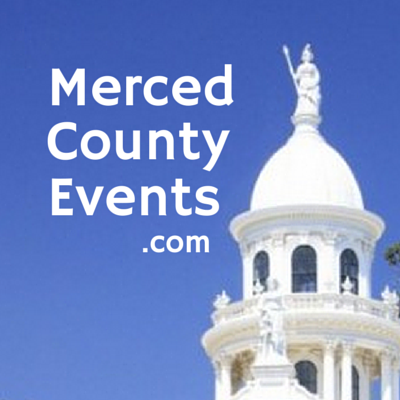























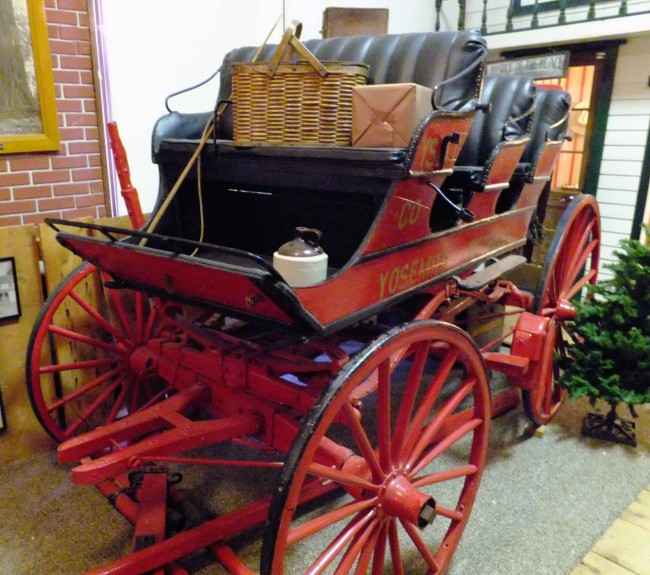























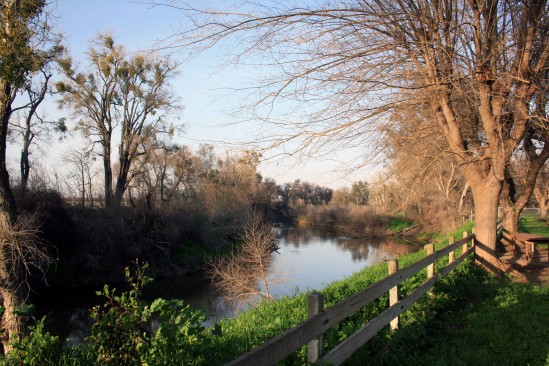





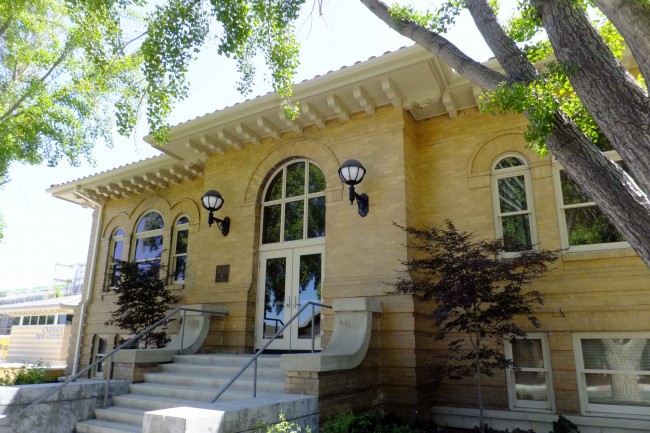



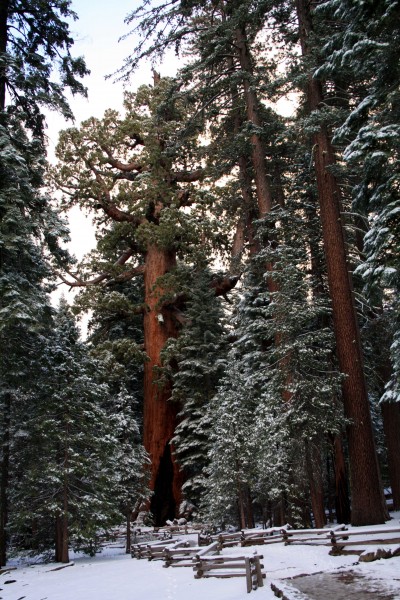

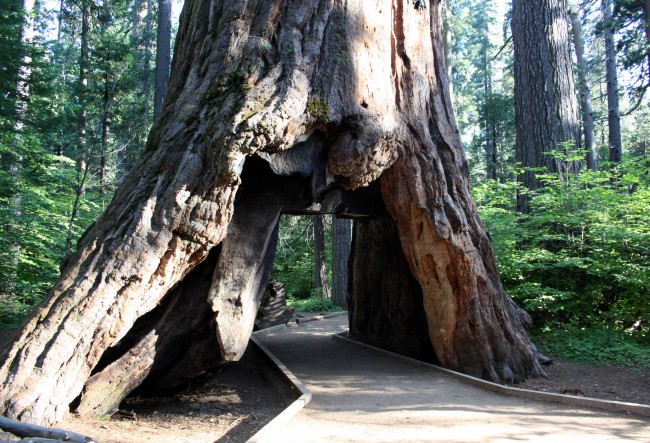











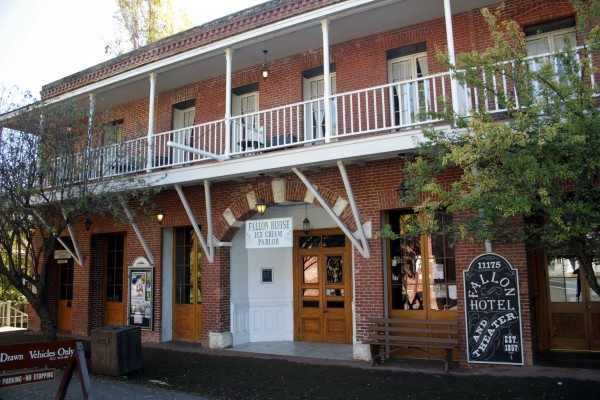














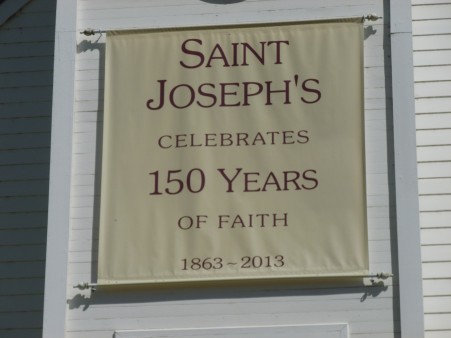




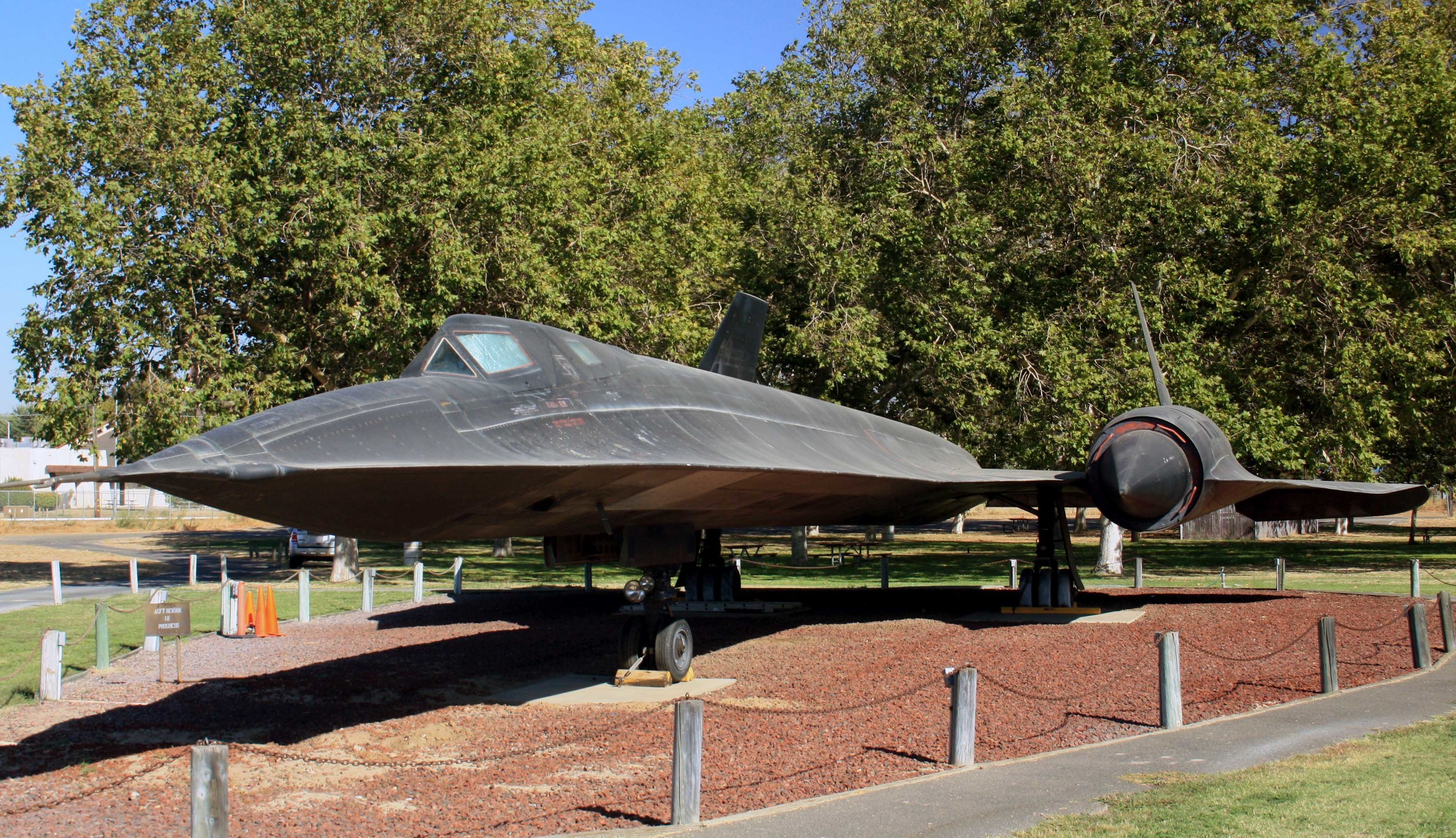



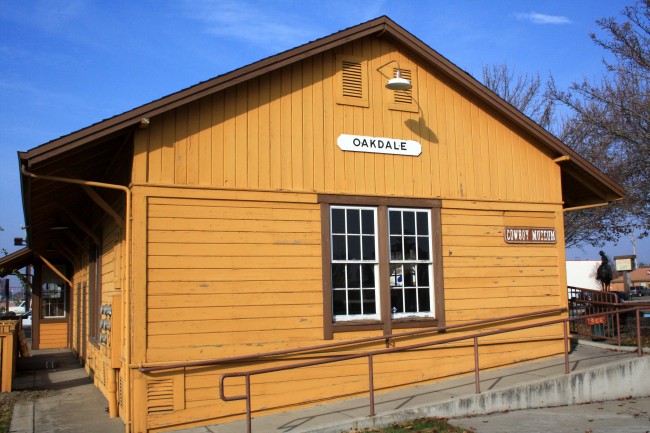










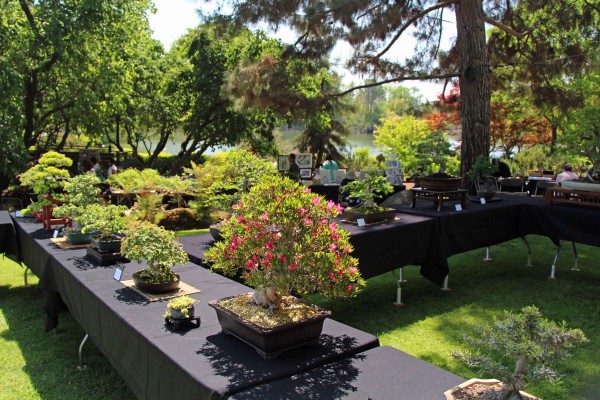





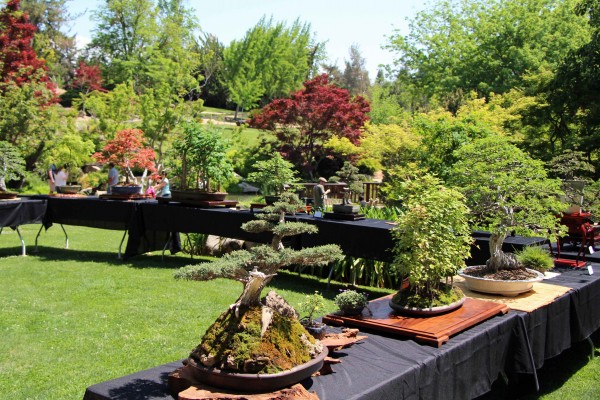




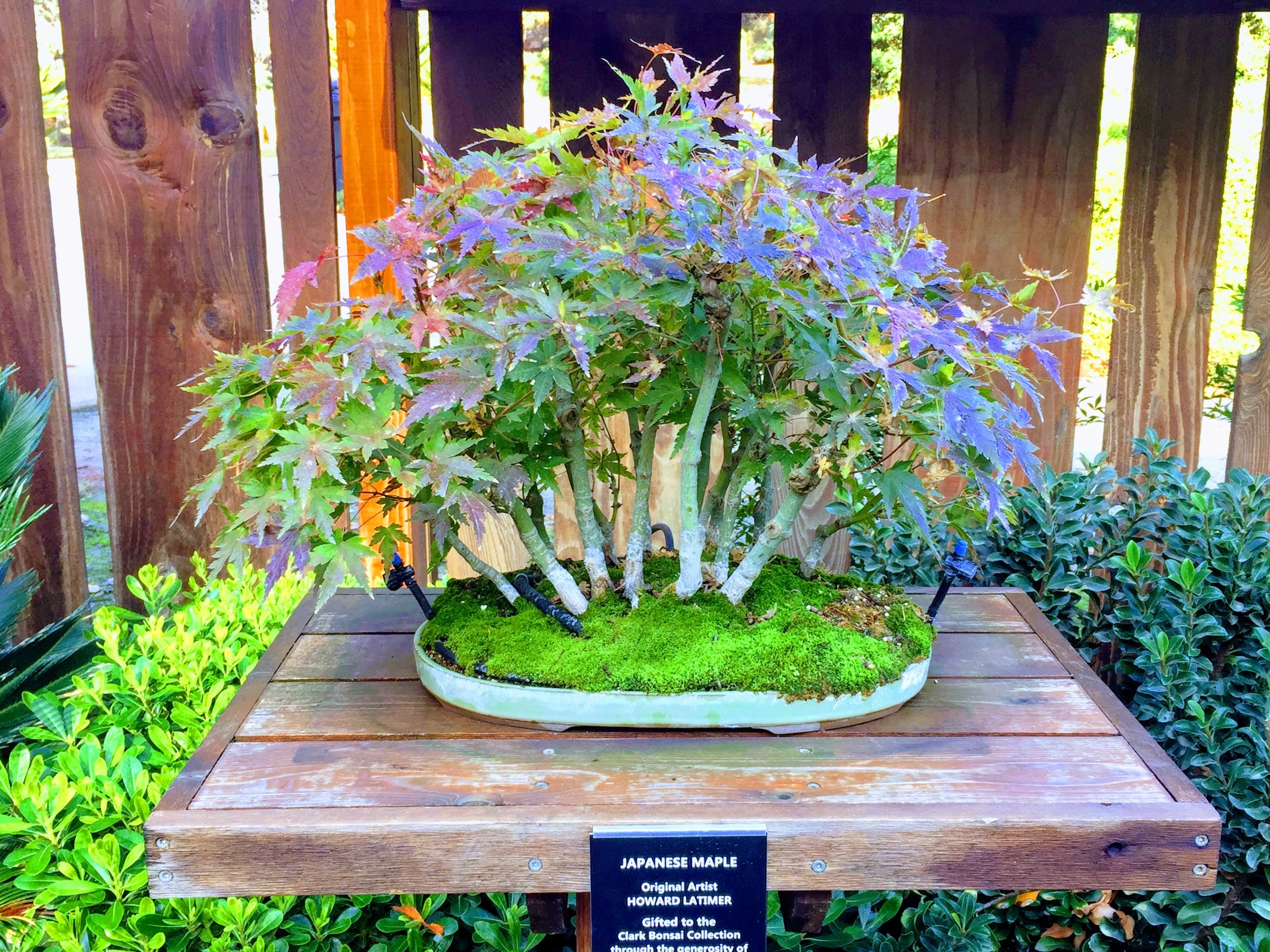





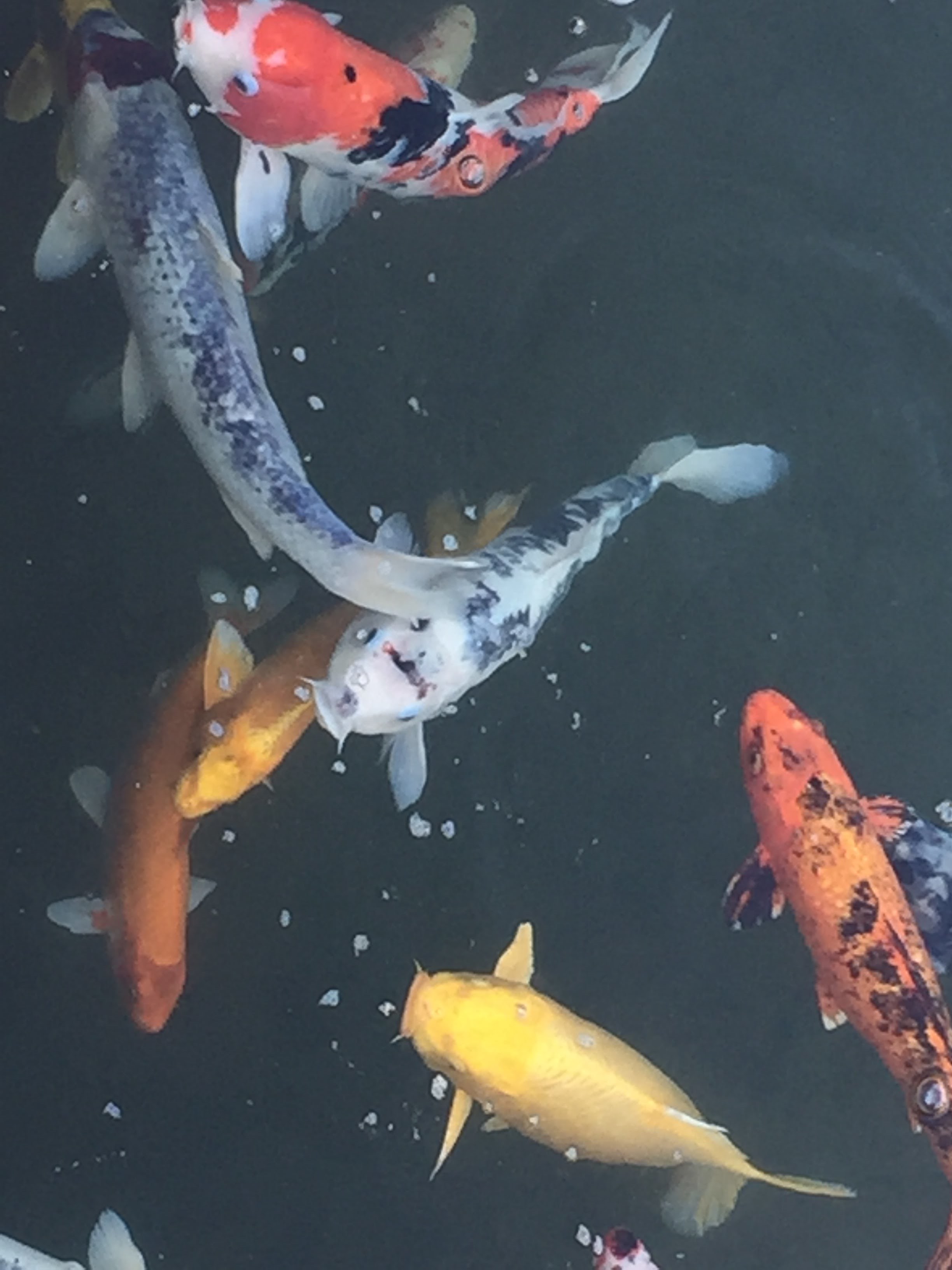









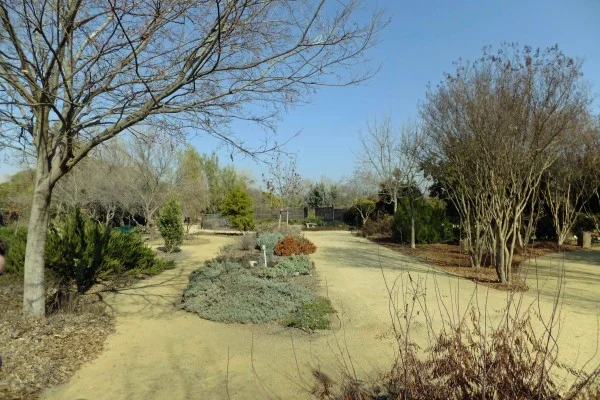

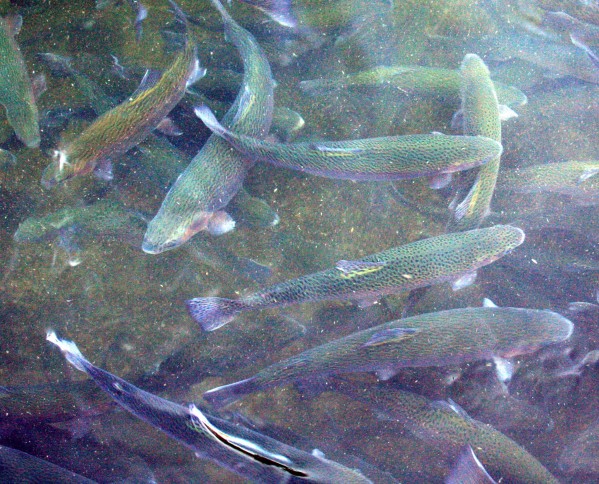



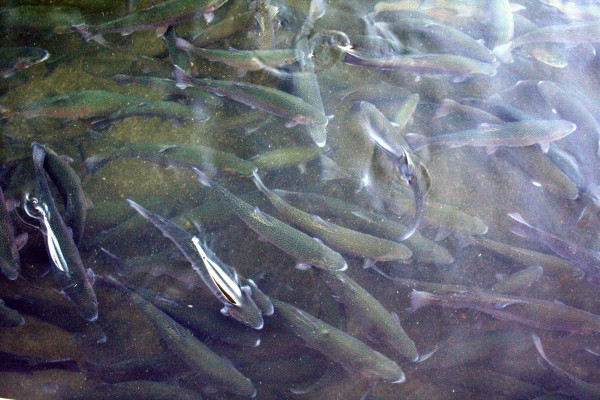

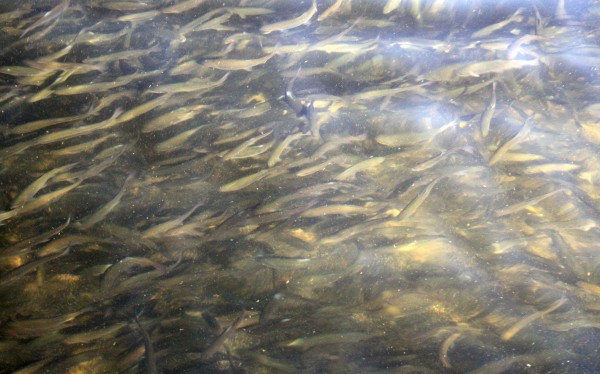











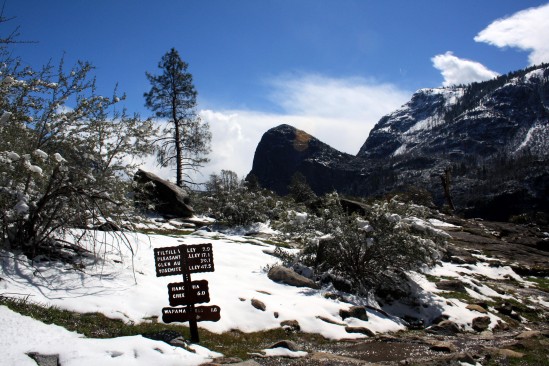


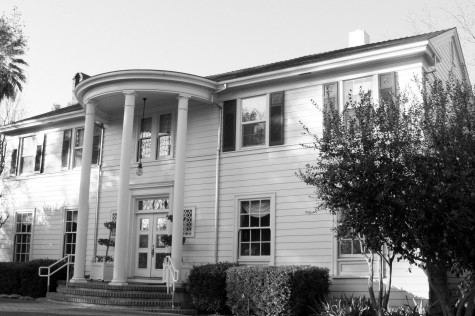

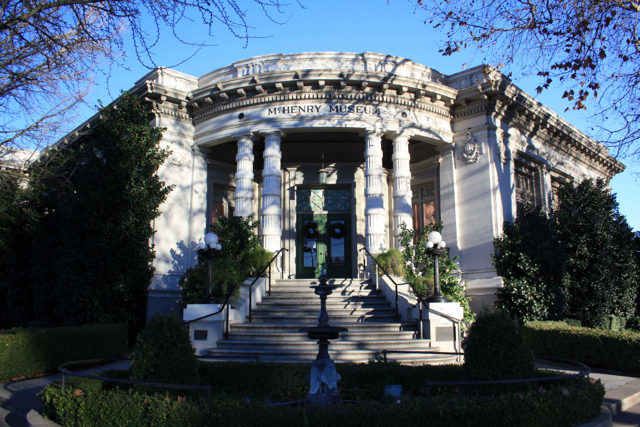
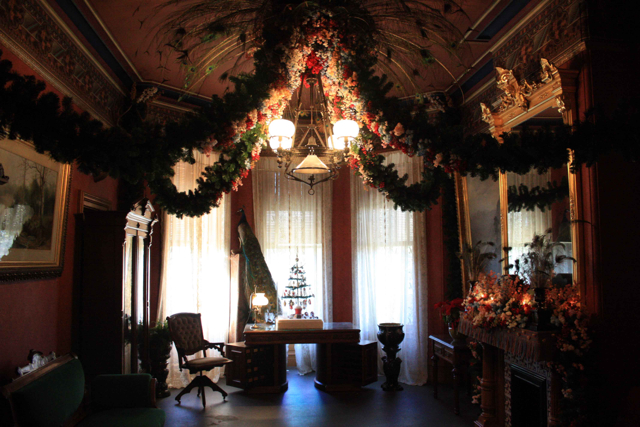



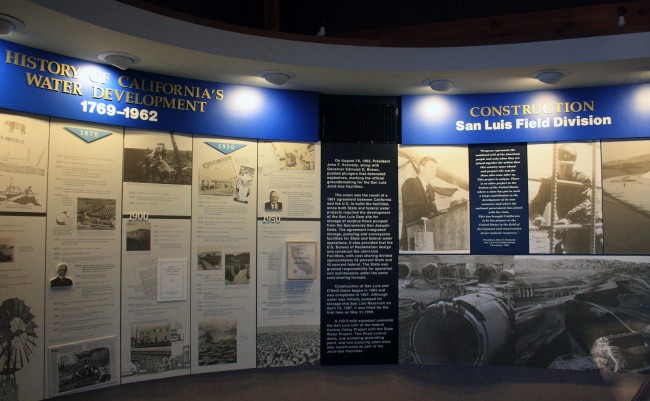


Adam Blauert, a high school teacher and avid outdoors enthusiast, has dedicated the majority of his life to Merced County. His passions include fishing, backpacking, delving into local history, and exploring the wonders of the western states.